Kyoto’s cuisine boasts a rich history and distinctive character, attracting millions of visitors to its restaurants every year. Embark on a culinary journey and explore some of the best places to eat in Kyoto, from tofu to wagyu beef and kaiseki course meals.
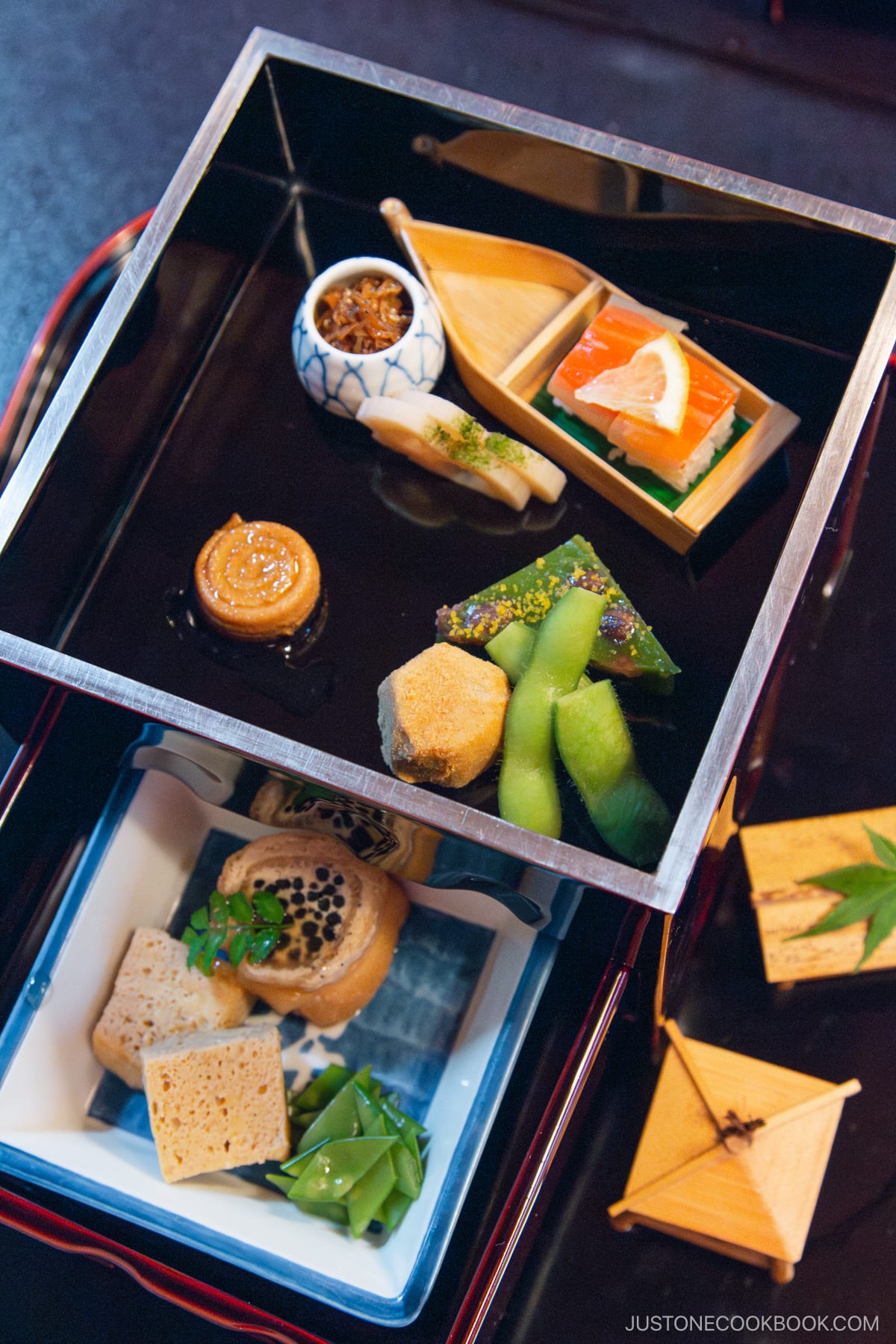
In this final post about our visit to Kyoto, we are excited to recount our experience with Kyoto’s exceptional food scene. As we strolled through the enchanting city, immersing ourselves in its breathtaking scenery, we couldn’t resist indulging in the delectable array of specialty foods it had to offer. Our culinary journey took us from savoring the internationally acclaimed Kobe Steak to relishing the artistry of kaiseki ryori, a traditional culinary experience like no other.
We also had the pleasure of visiting a tofu shop with a remarkable 375-year legacy and touring the vibrant central food market. Each one provided a unique insight into Kyoto’s rich history and the exquisite nuances of Japanese cuisine.
Kiraku: Tasting The Best Okonomiyaki and Teppanyaki in Kyoto
Depending on where we travel in Japan, we would decide whether to eat dinner in the hotel or explore what the city has to offer. If we are in a remote area then we would book ryokan with dinner, but in Kyoto, we knew we had to try the city’s many food offerings.
For our first meal, we opted to dine at Kiraku, a renowned restaurant that specializes in okonomiyaki (お好み焼き) and teppanyaki (鉄板焼き) cuisine. Even though we make these dishes at home, it’s different when someone else handles the preparation and cooking. At Kiraku, we could see into the open kitchen, where all the dishes were skillfully prepared on a large teppan (iron griddle).
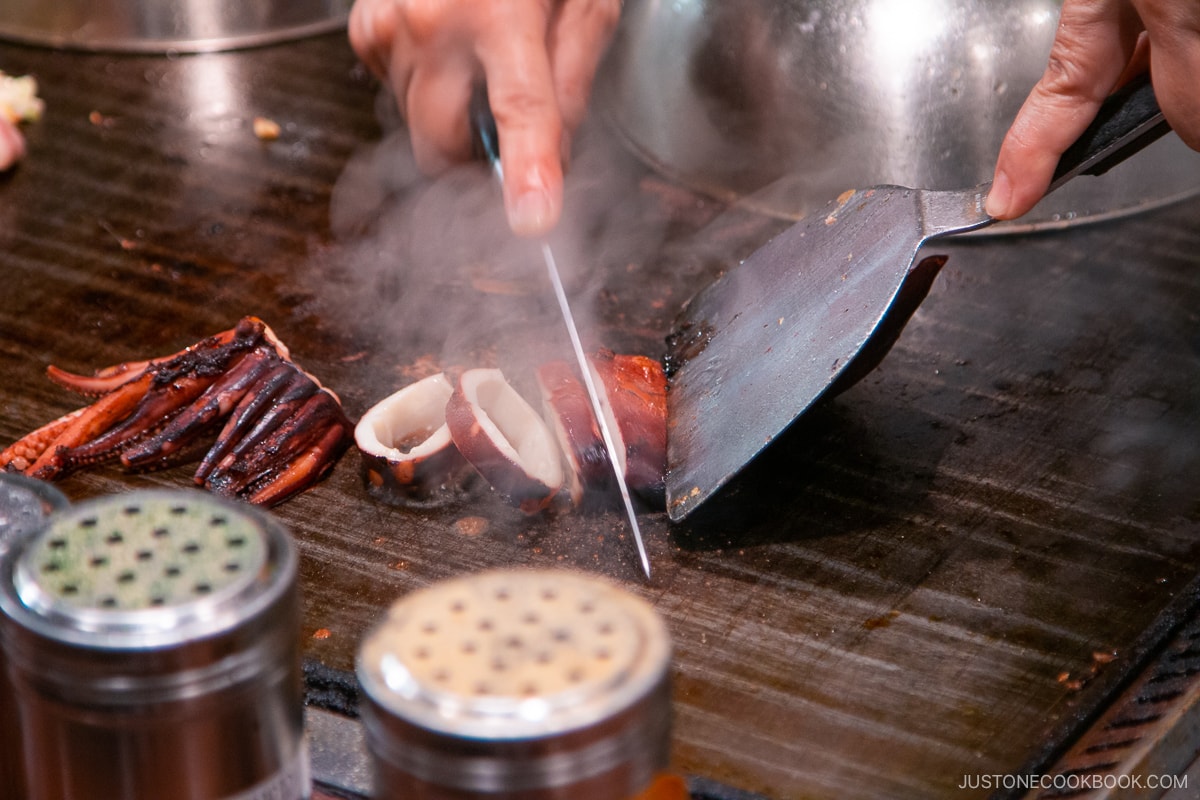
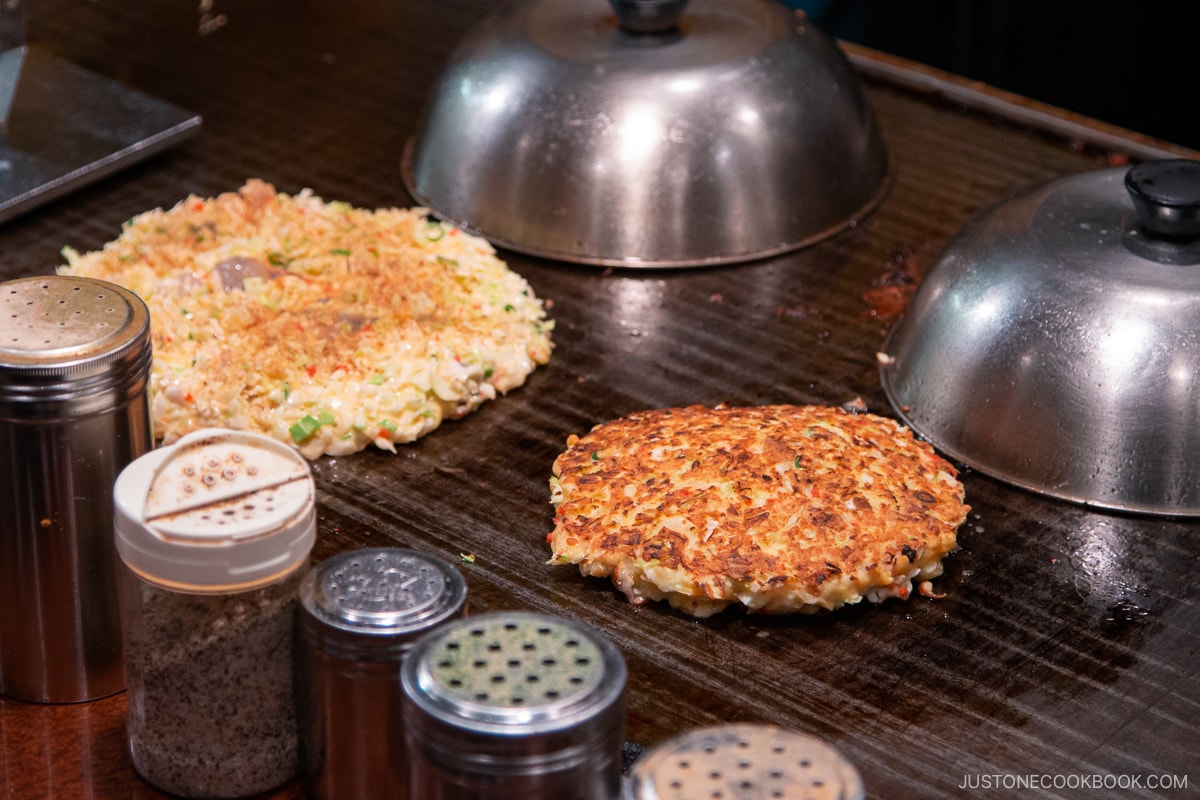
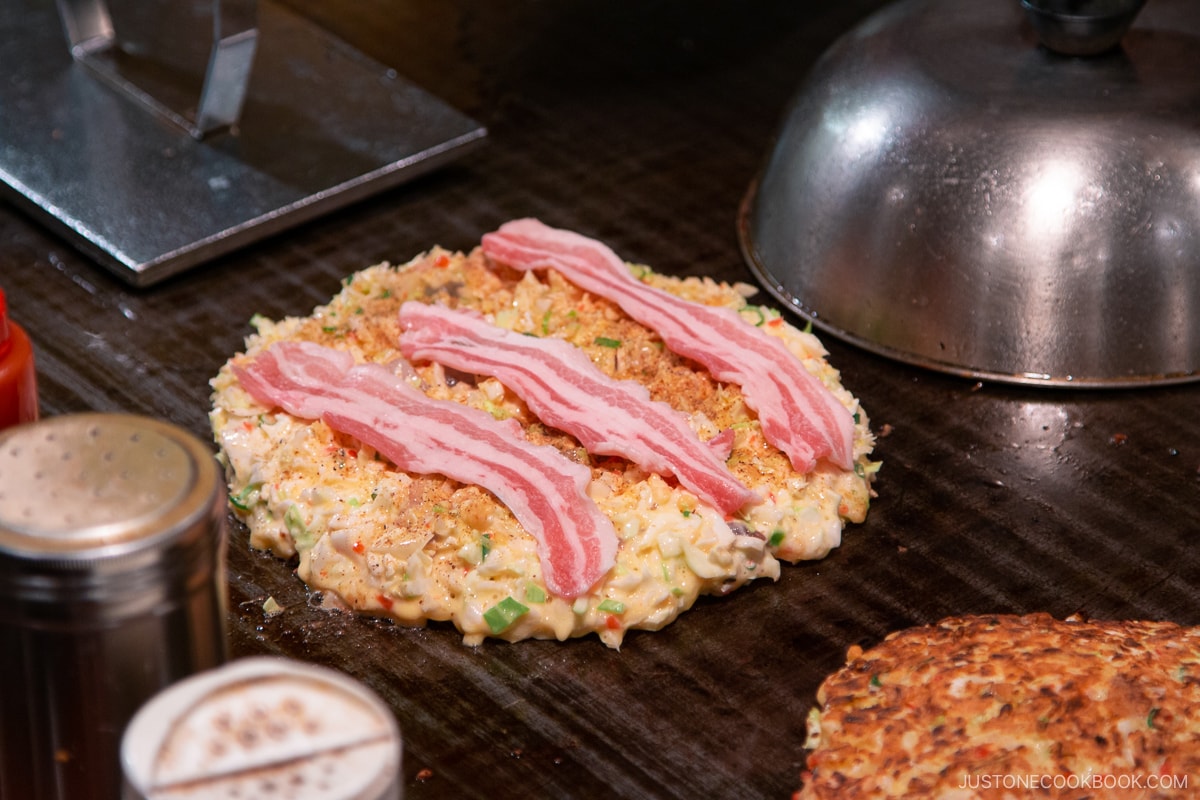
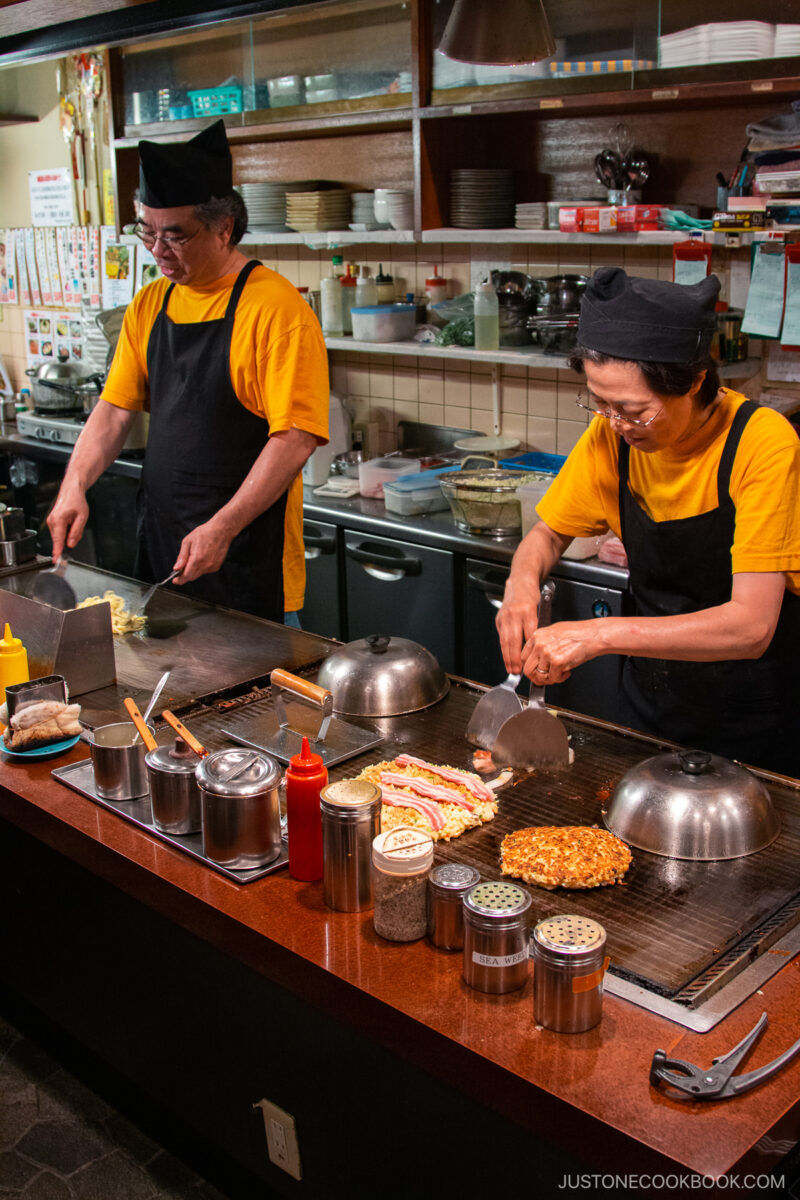
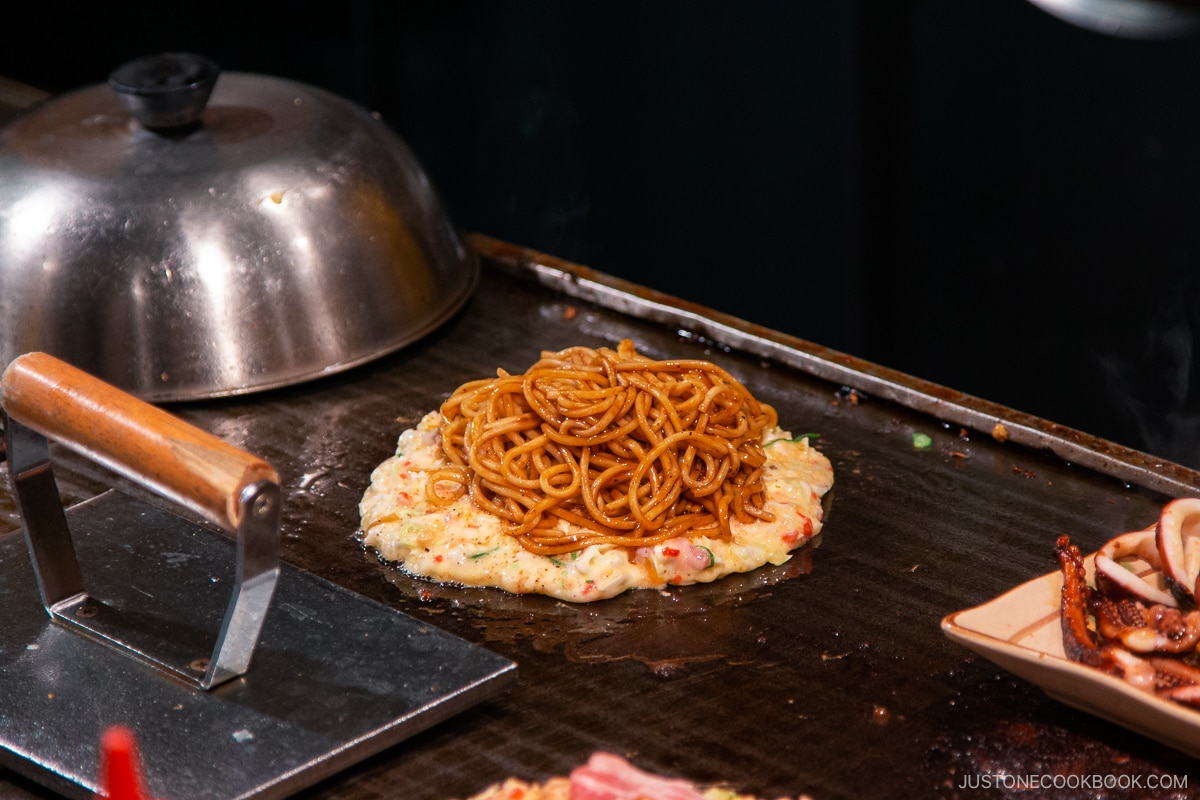
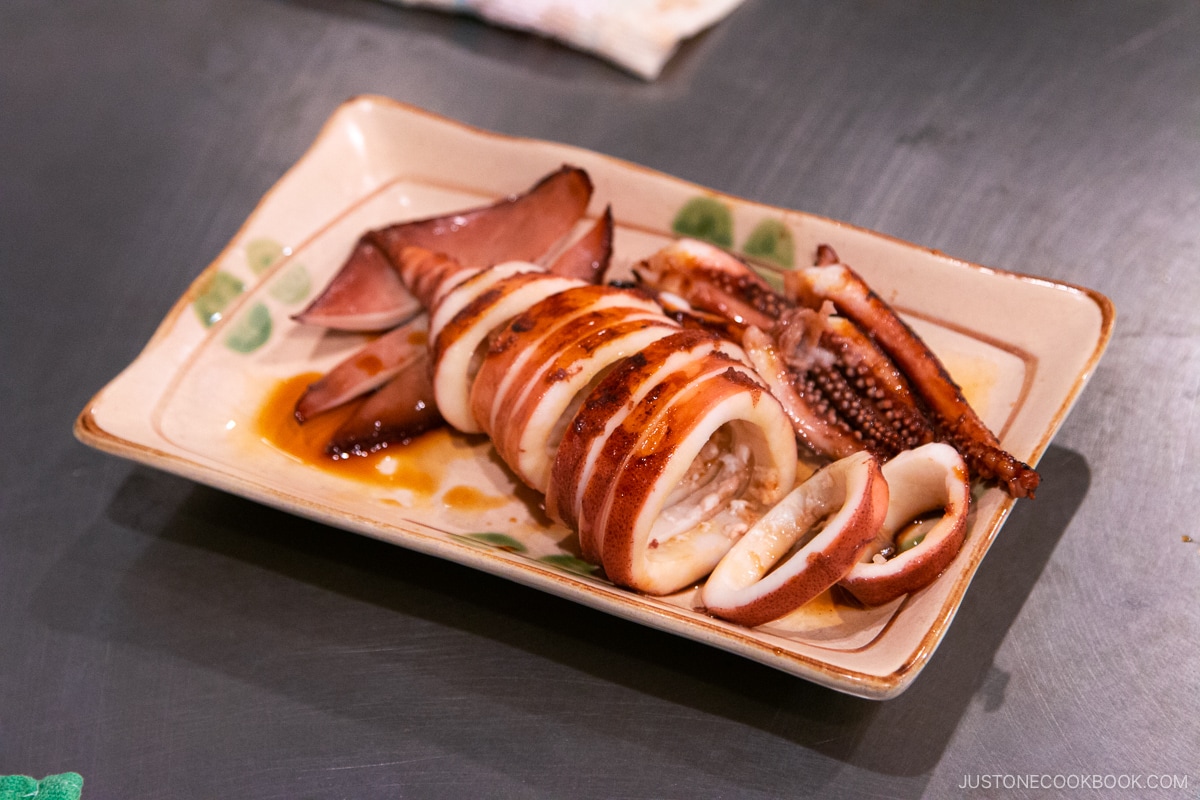
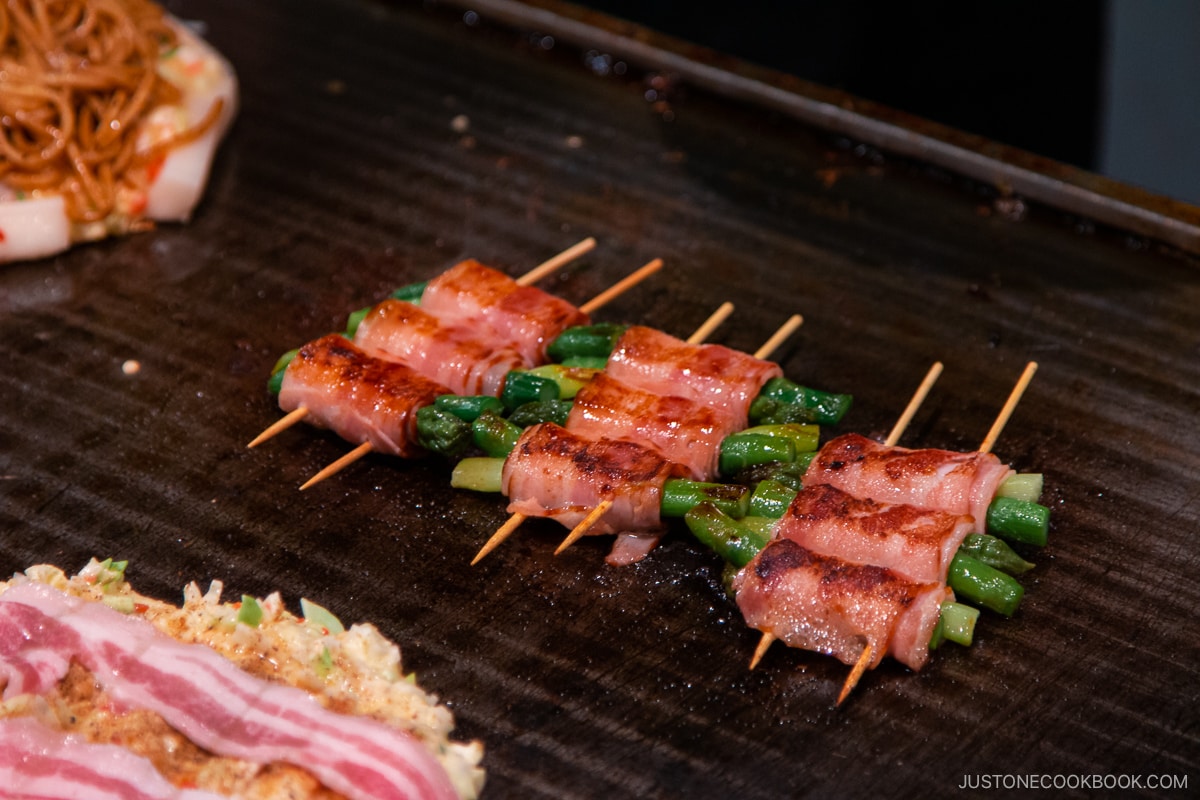
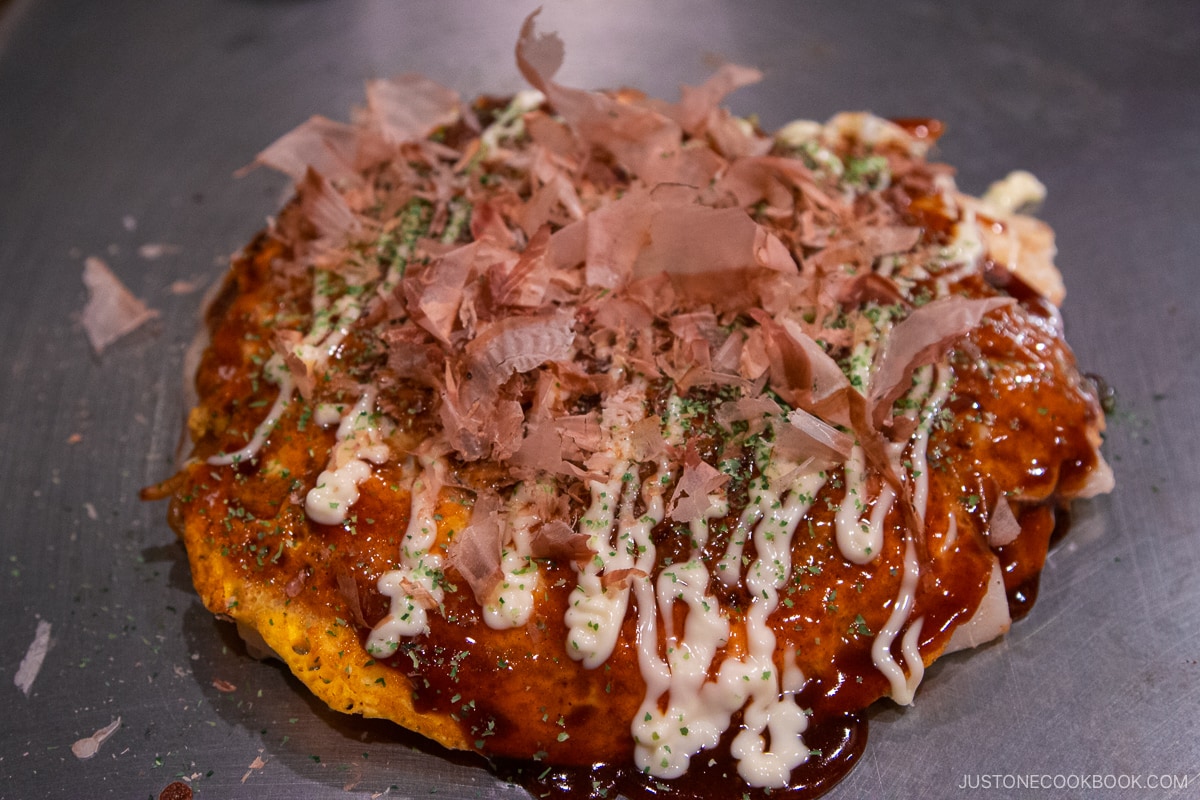
Kiraku offers two sizes for okonomiyaki: one is gigantic and the other is the standard. We ordered one of each, which was more than enough for 2 adults and 2 children. Our son couldn’t resist ordering one of his favorite dishes, grilled squid (bottom left), along with their house special omelet tonpeiyaki. Kiraku had such an inviting atmosphere and the food was delicious, so it was perfect for a quick bite.
Yudofu at Okutan: Experiencing Kyoto’s Kaiseki Cuisine
Kyoto is renowned for its exquisite Kyo-ryori (京料理), which translates to Kyoto’s Cuisine, encompassing the city’s treasured culinary traditions. At the heart of Kyo-ryori lies a philosophy to:
- Celebrate the flavors and textures of fresh, seasonal ingredients.
- Utilize minimal seasoning to allow the natural flavors to shine.
- Embrace artistic-like presentation.
- Create a sensory experience by engaging all five senses.
One of Kyoto’s specialty dishes that embodies this culinary philosophy is yudofu (湯豆腐), or simply hot tofu. We enjoyed our tofu meal near Kiyomizu-dera at Okutan (総本家ゆどうふ奥丹清水), a tofu restaurant with a remarkable history dating back more than 375 years, founded in 1635.
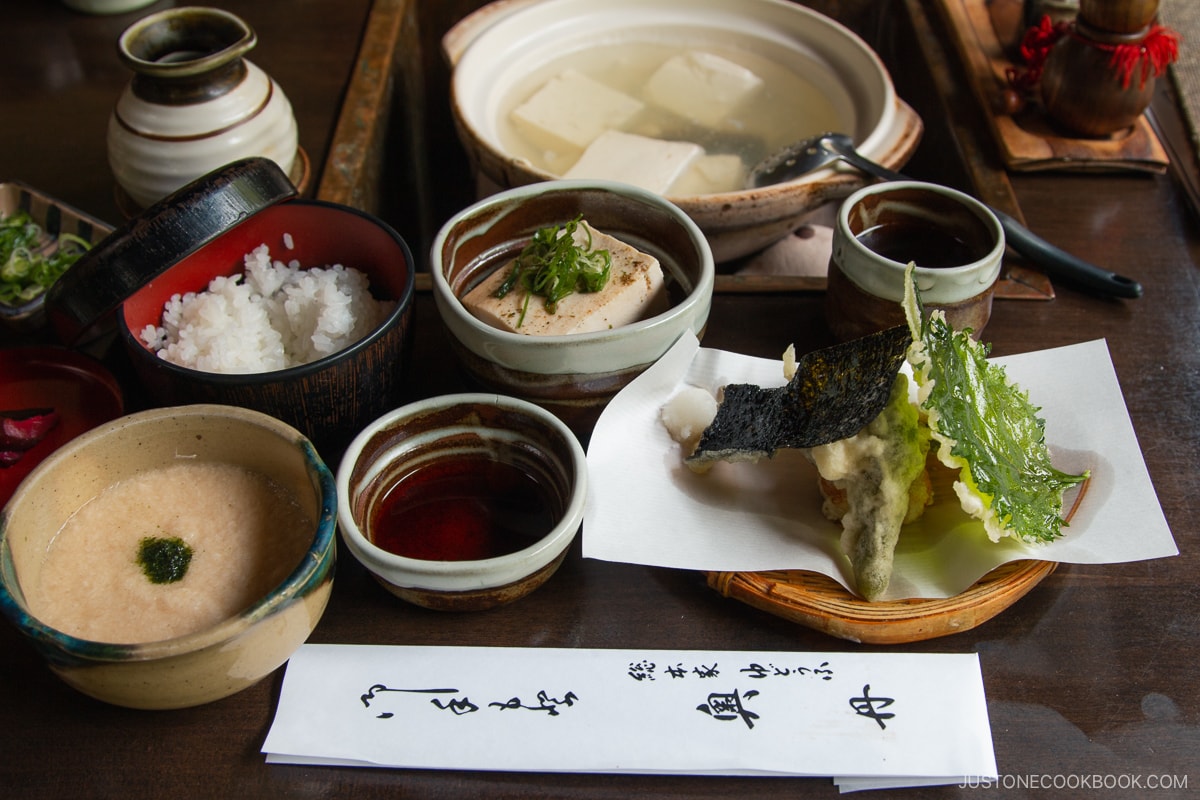
Situated in a beautiful, picturesque nature setting that changes with the seasons, Okutan was one of the most unforgettable dining experiences. Since it’s extremely popular, we recommend making a reservation beforehand or arriving around 11 AM to avoid a long wait. Okutan’s tofu is made in the basement of the restaurant fresh every morning to be served that day.
What makes their tofu so special? It’s made using natural groundwater from Shiga Prefecture and natural coagulant, resulting in a mild yet rich flavor with a velvety texture. Besides using the best of the best ingredients, their soybeans are pesticides free. Depending on the course you order, the set meal ranges from USD$32 to $43. Most courses include sesame tofu, grilled tofu with sweet miso, tororo (grated yam, here it’s soup), vegetable tempura, and of course yudofu.
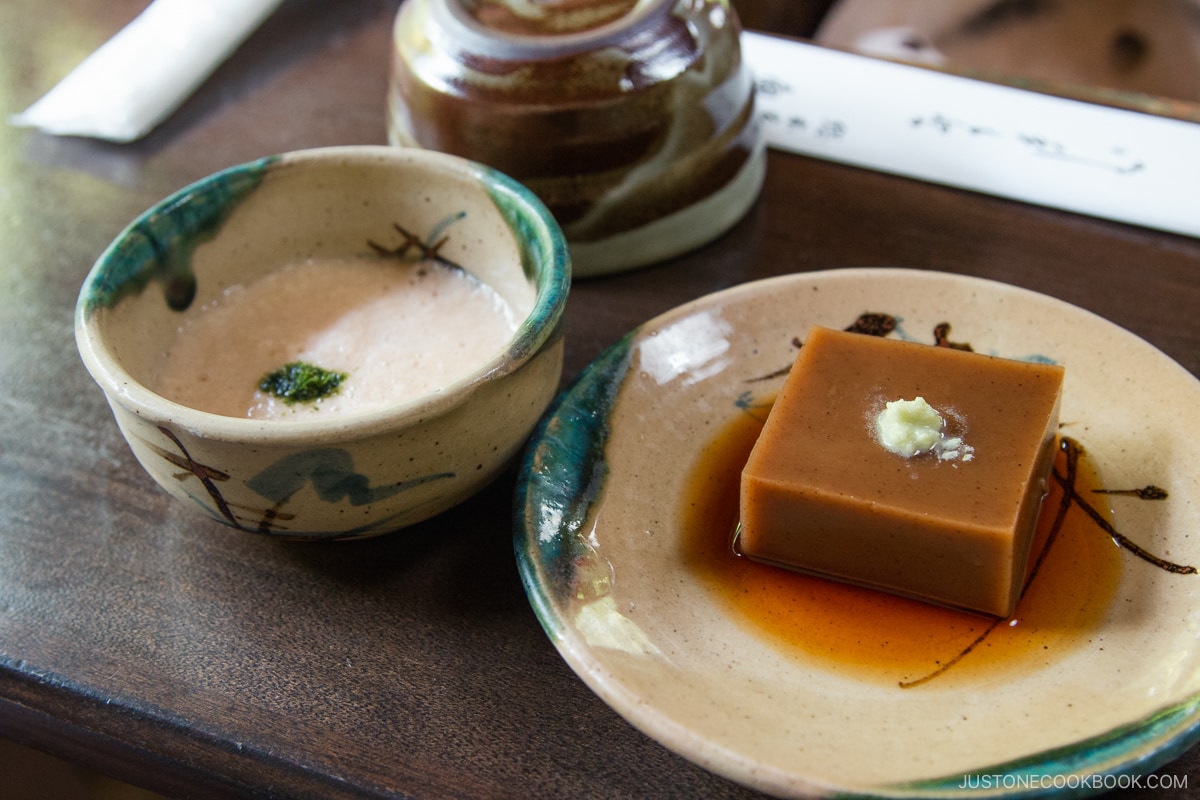
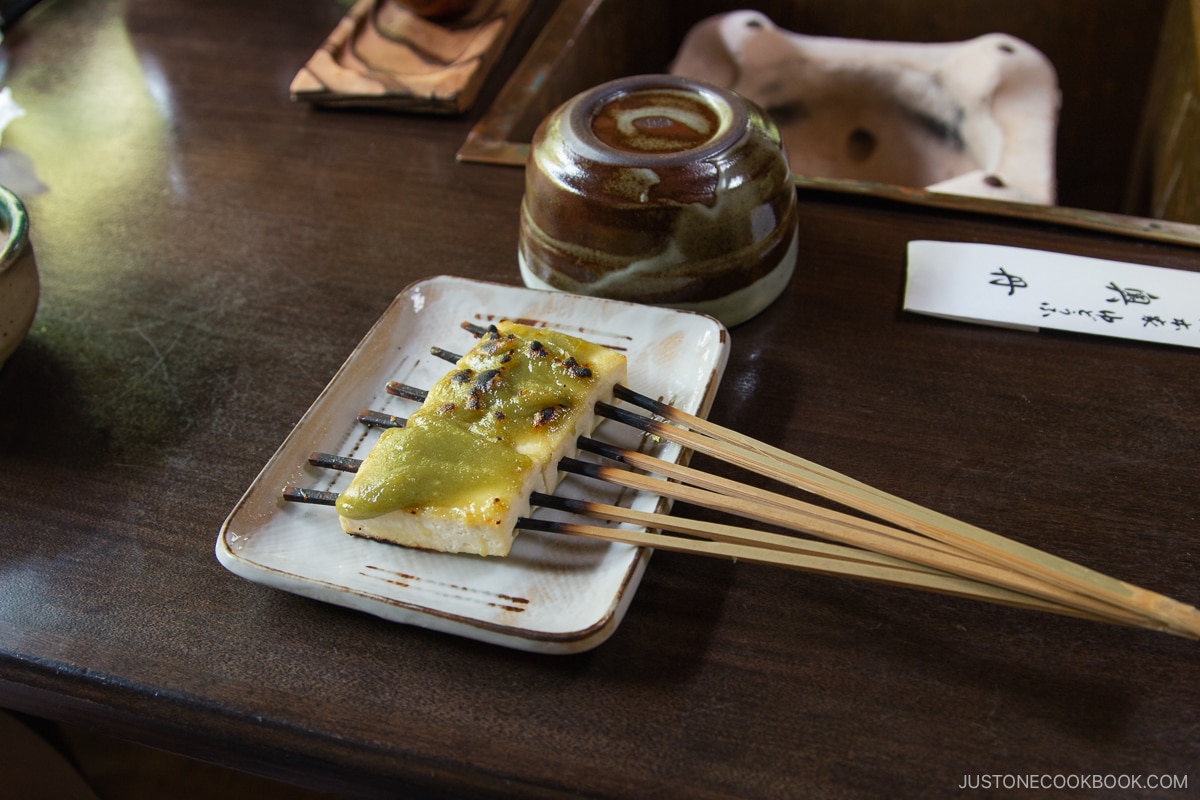
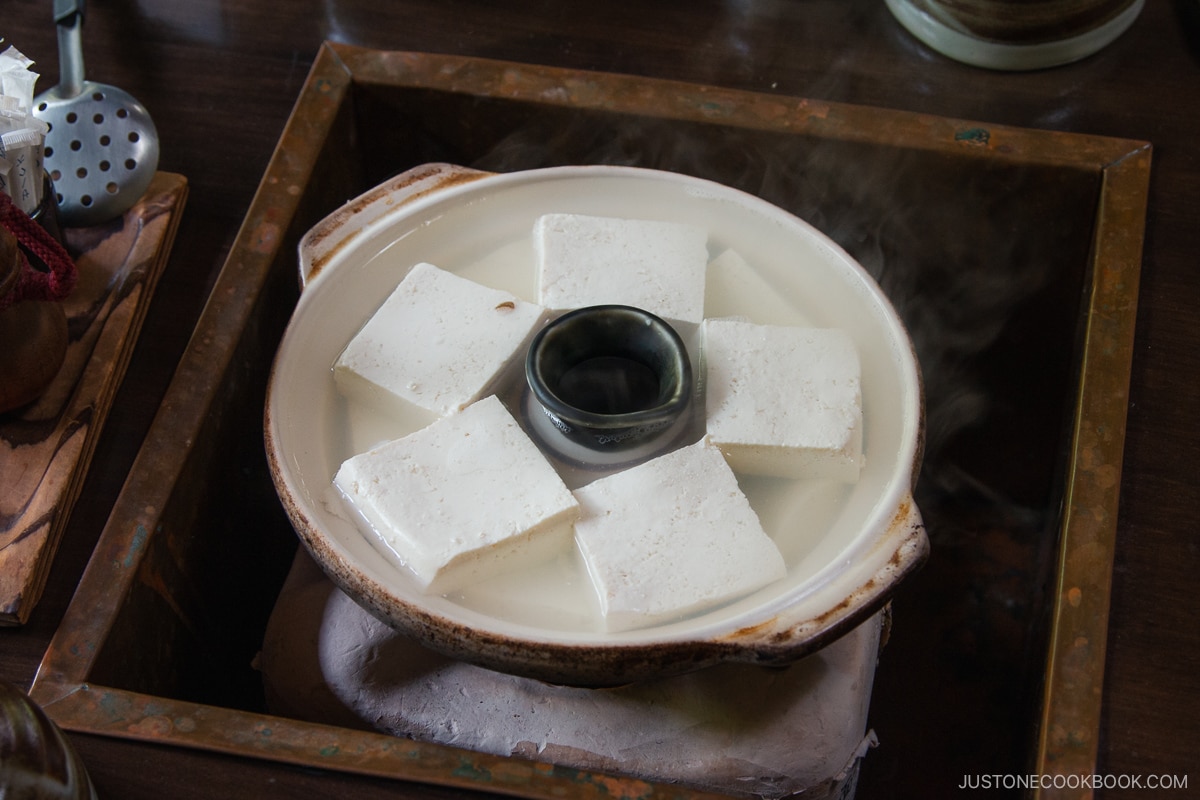
Each dish was utterly enjoyable, with a careful balance of flavors that allowed the natural flavors to sing. The use of sweet miso brought out the perfect sweetness and complimented the delicate tofu. As for the main course, the restaurant recommended savoring a piece without any condiments to enjoy its authentic taste. After that, you can enjoy the rest by putting a little soy sauce on the tofu and garnish with green onion and shichimi togarashi. It was hands down one of the best yudofu we’ve ever had.
Nishiki Market: A Gastronomic Delight in the City Center
After exploring Kiyomizu-Dera and other sites around the east side of Kyoto, head to Nishiki Market in the afternoon. This vibrant food arcade has been around since the 1600s and is one of the main tourist attractions in Kyoto. The market closes at 5 pm so give yourself a bit of time to fully explore.
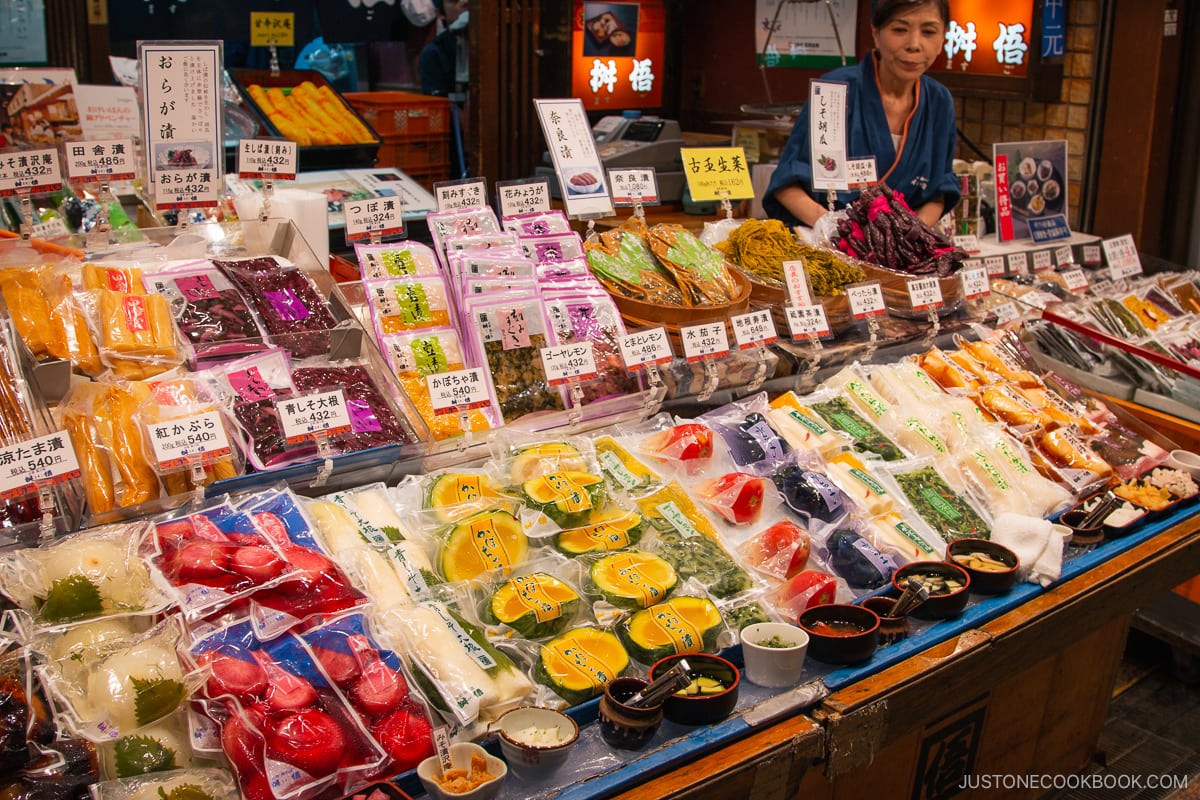
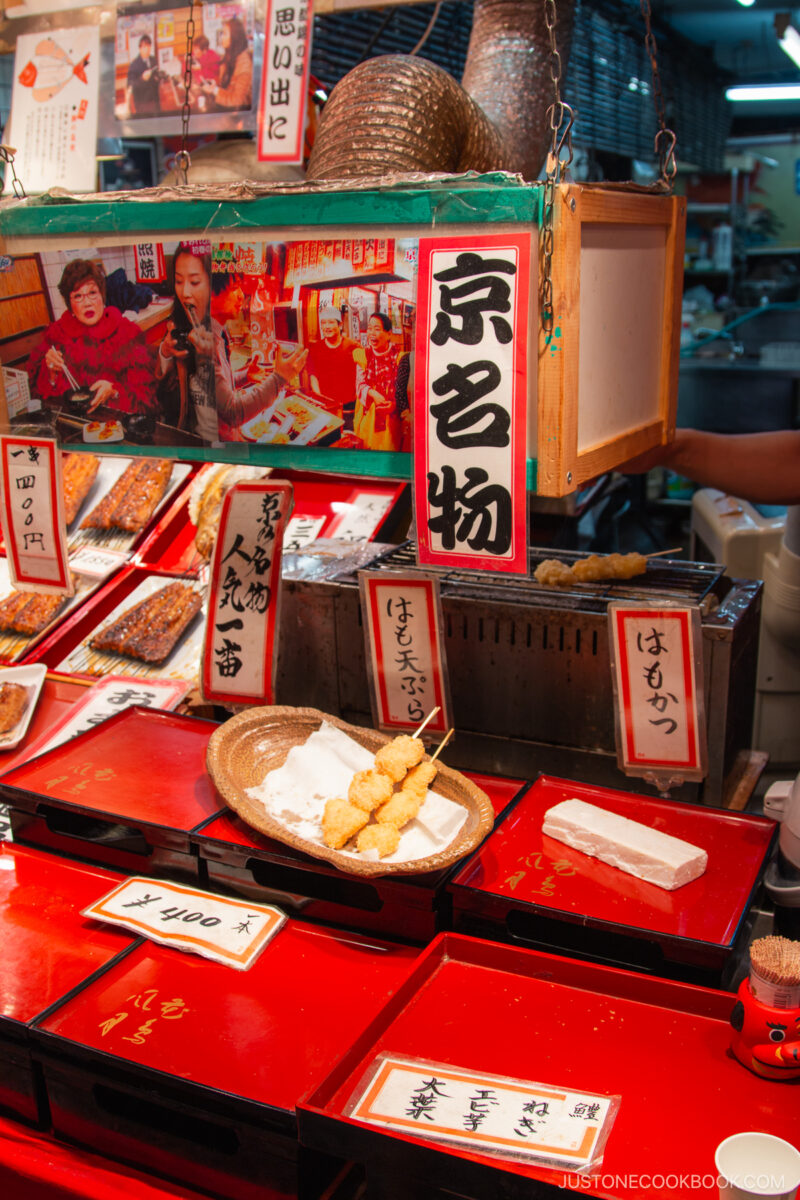
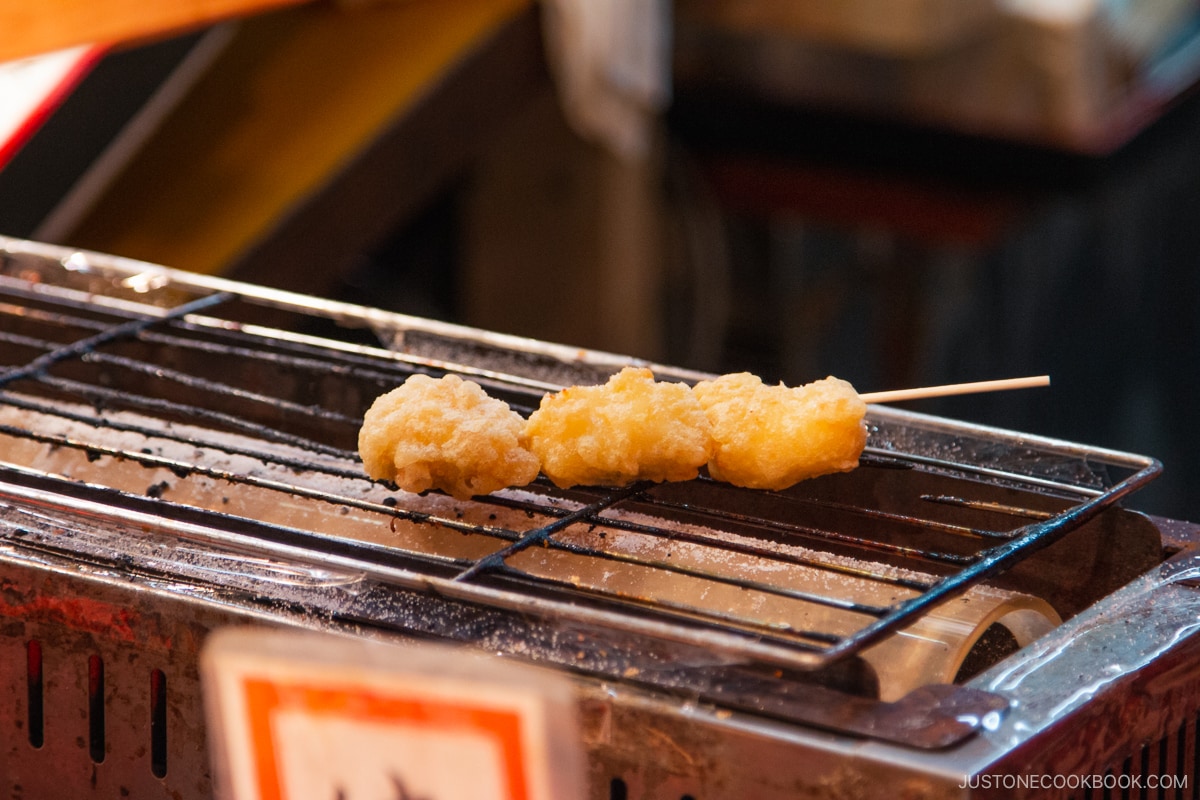
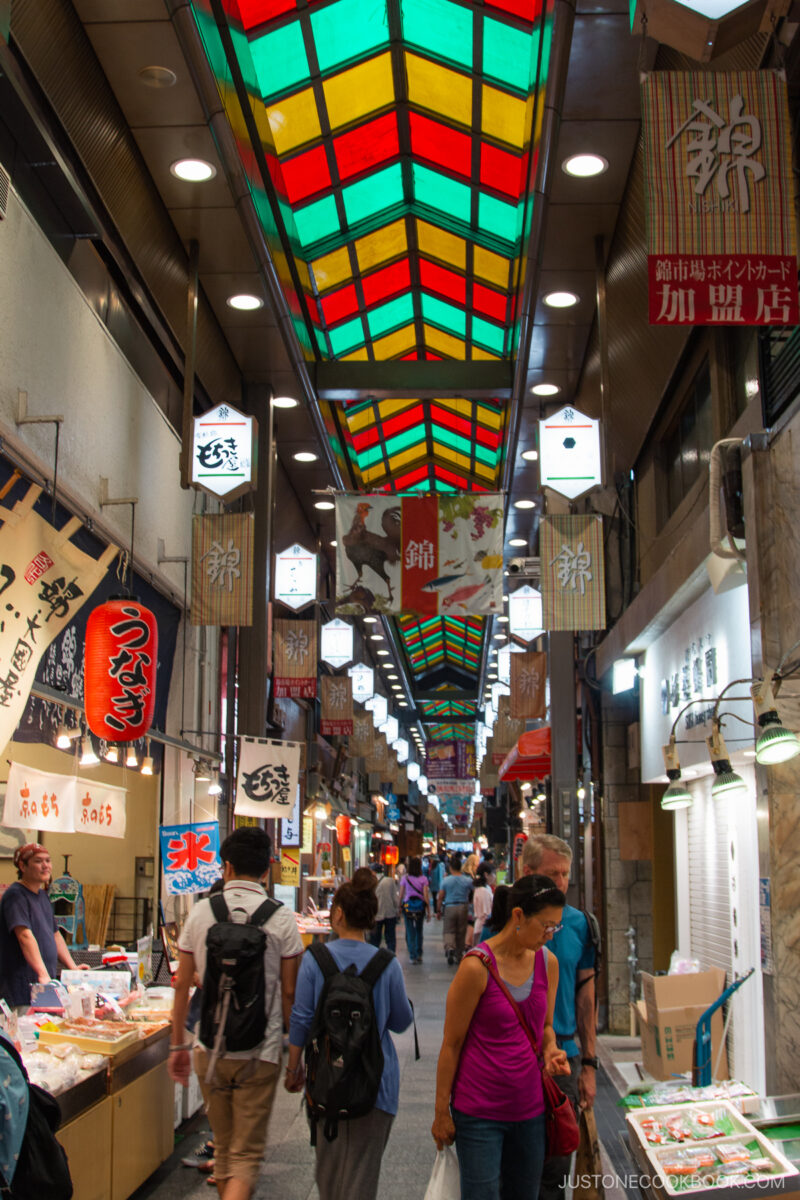
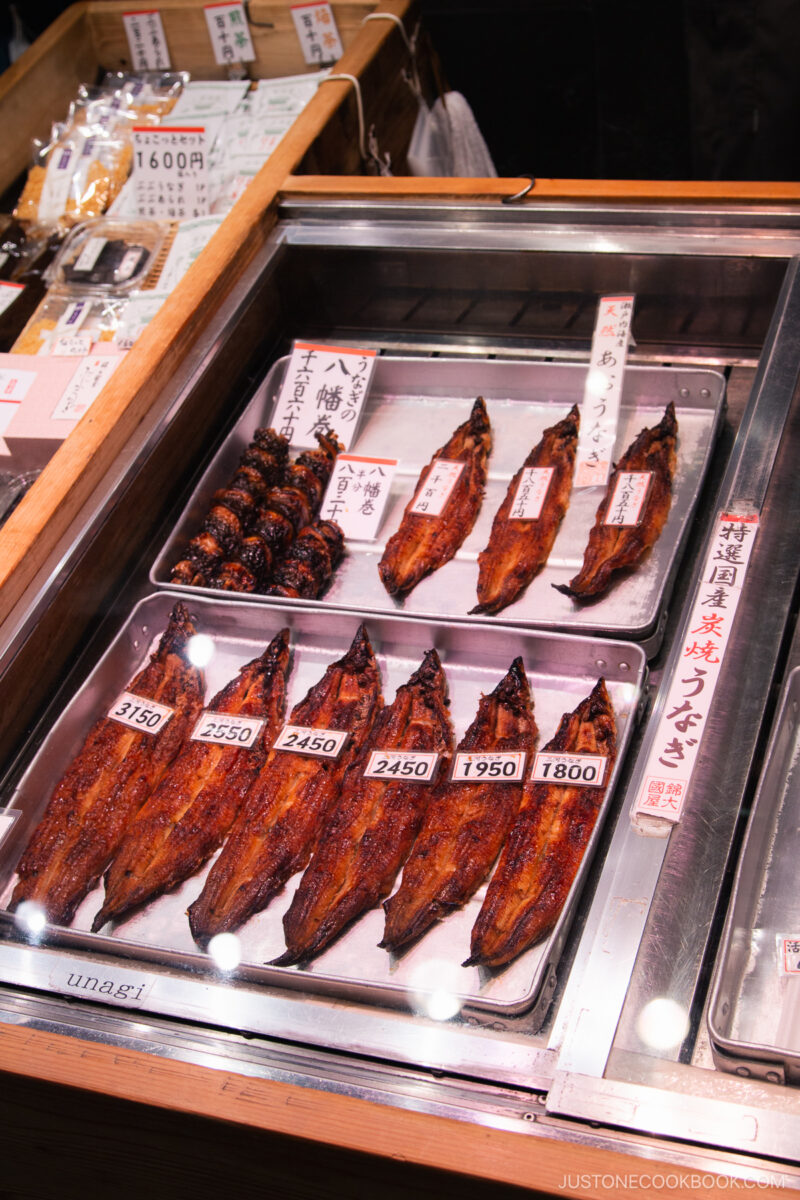
The market runs for about 4 blocks, boasting over 130 stores offering various culinary treats. From tsukemono (Japanese pickles) and grilled unagi (eels), to wagashi (traditional sweets), to Japanese pottery shops and spice stalls, you can literally find everything in this lively market. It’s a great place to shop and sample Kyoto’s signature flavors. We reckon buying one or two bags of Kyoto’s famous green tea to bring home as souvenirs!
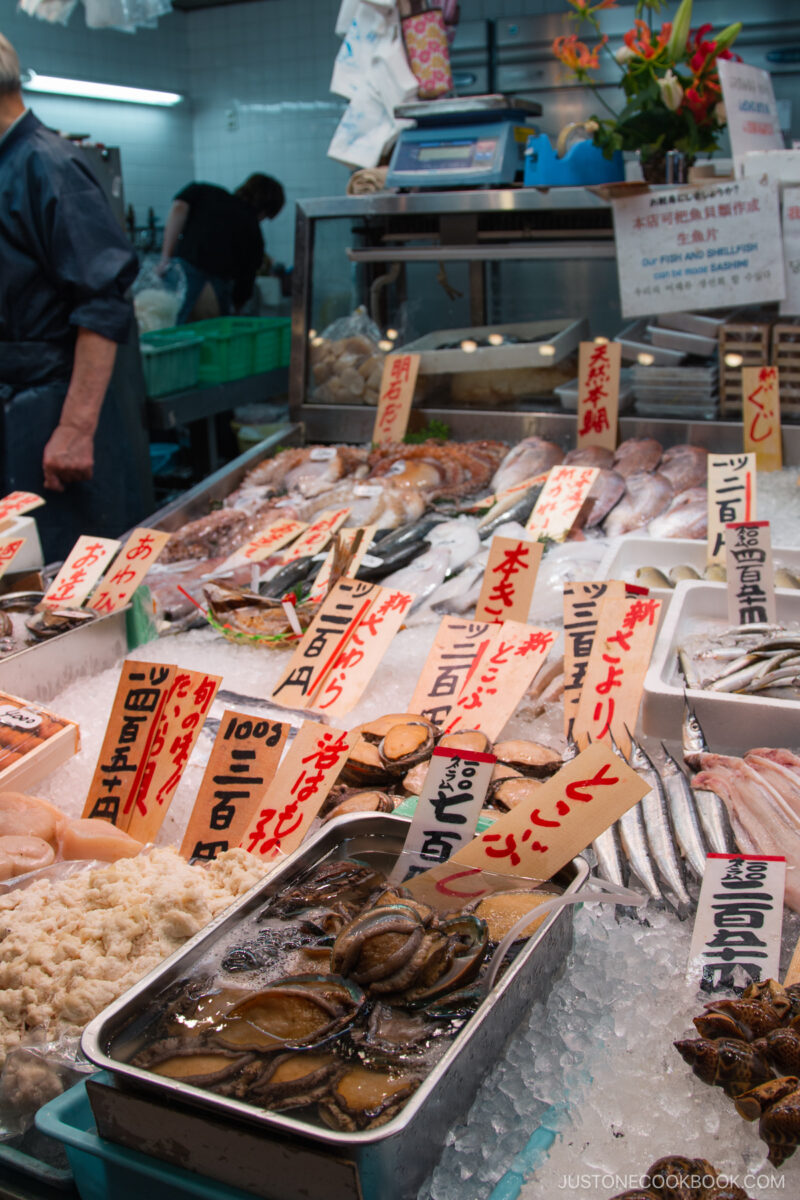
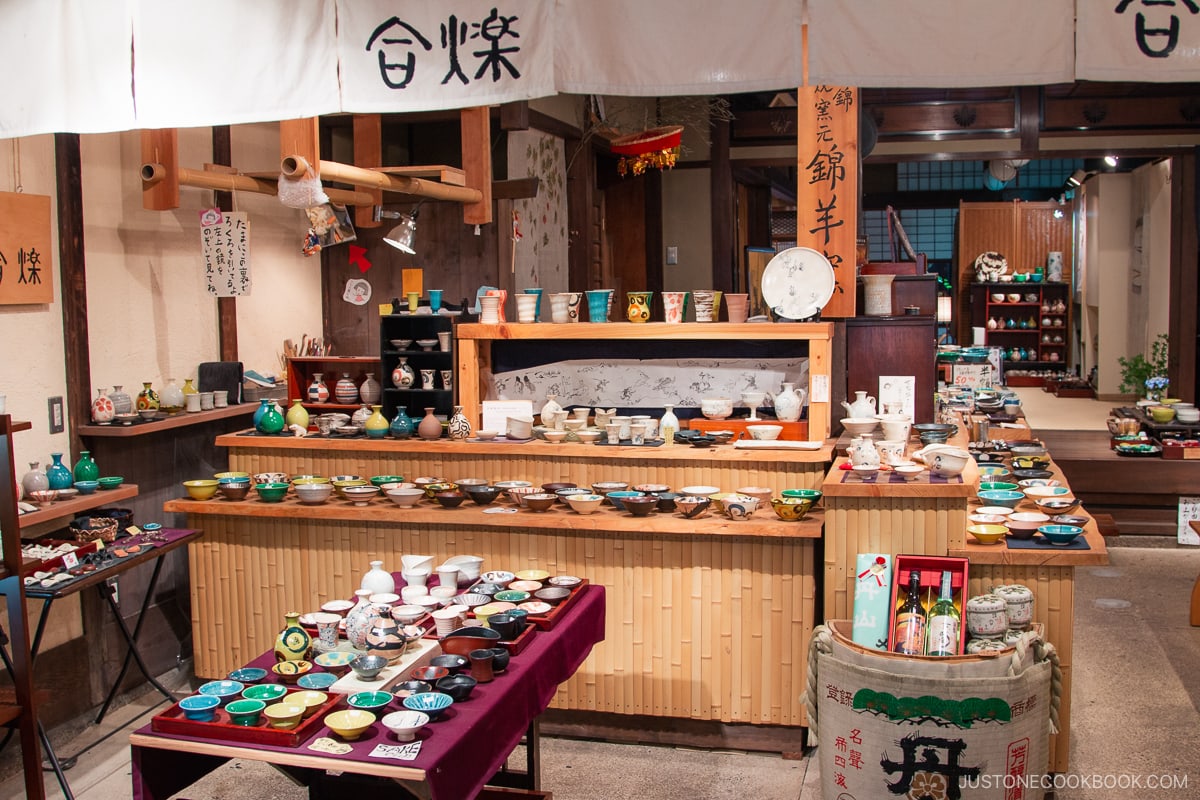
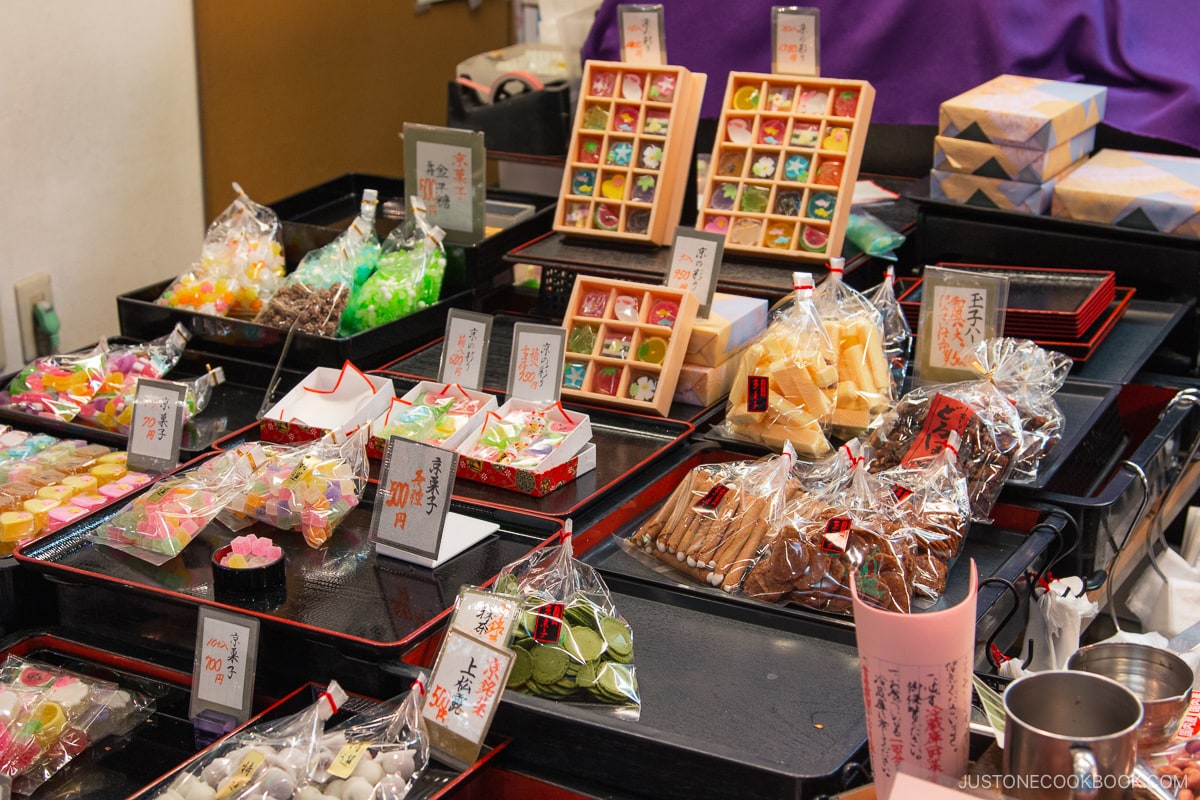
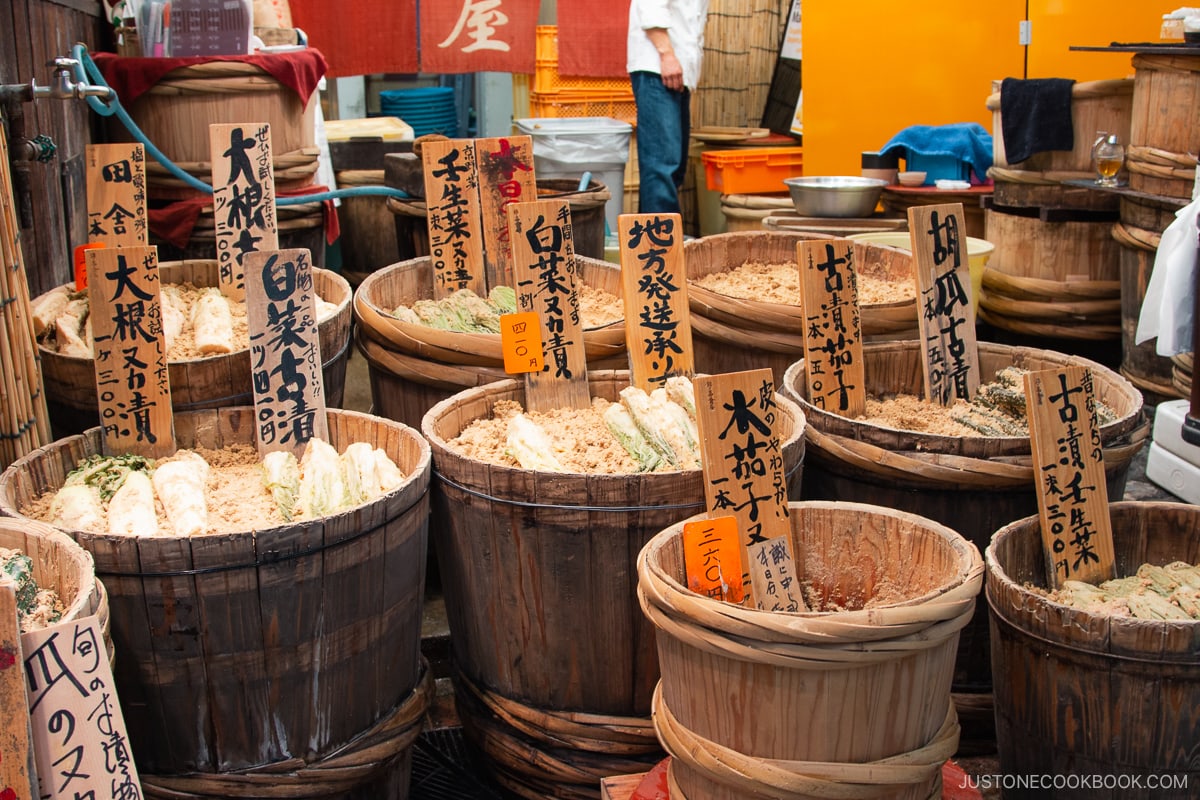
Ponto-Cho: Where History Meets Gastronomy
Situated 2 blocks south of the market is the Shijo Dori (四条通), Kyoto’s luxury and high-end retail street, where you’ll find department stores like Daimaru and Takashimaya as well as global brands like Louis Vuitton. Browse around and then head east where you’ll find a small alley called Ponto-chō (先斗町), where history meets gastronomy. Don’t let the size of the alley deceive you, this area is one of the main geisha districts and has an extensive restaurant selection.
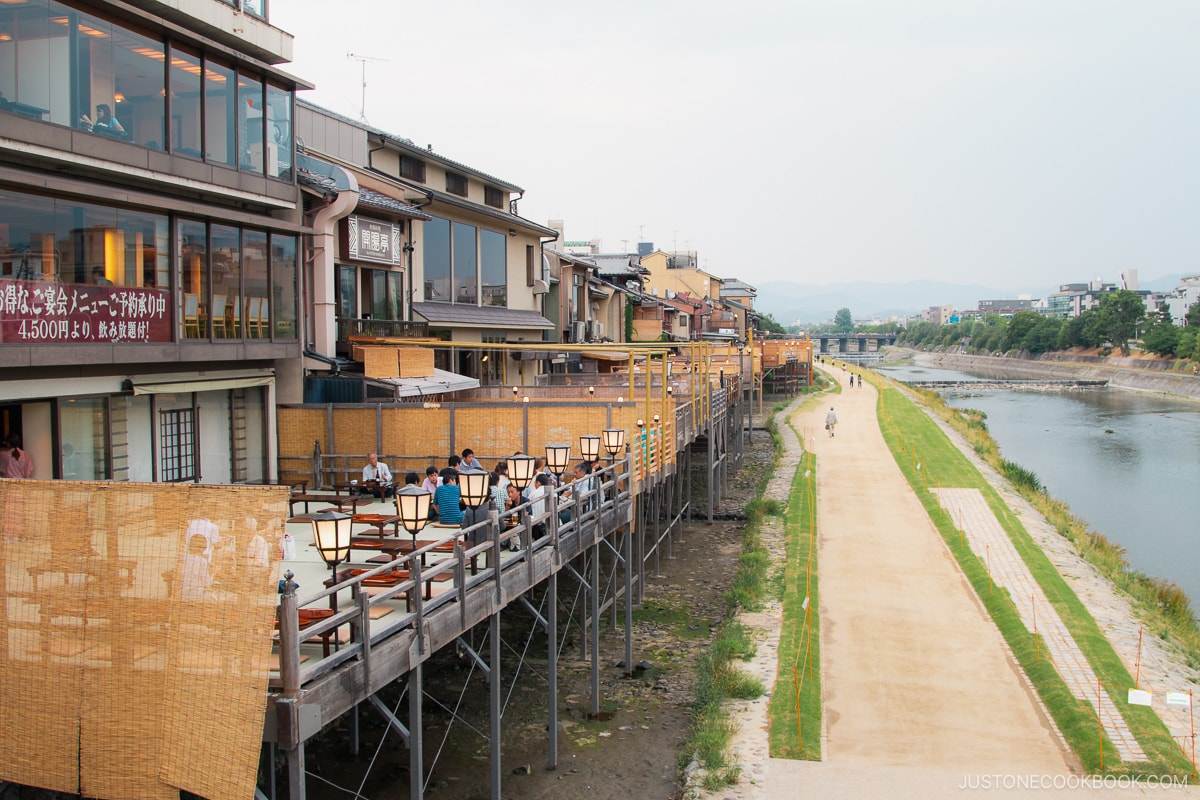
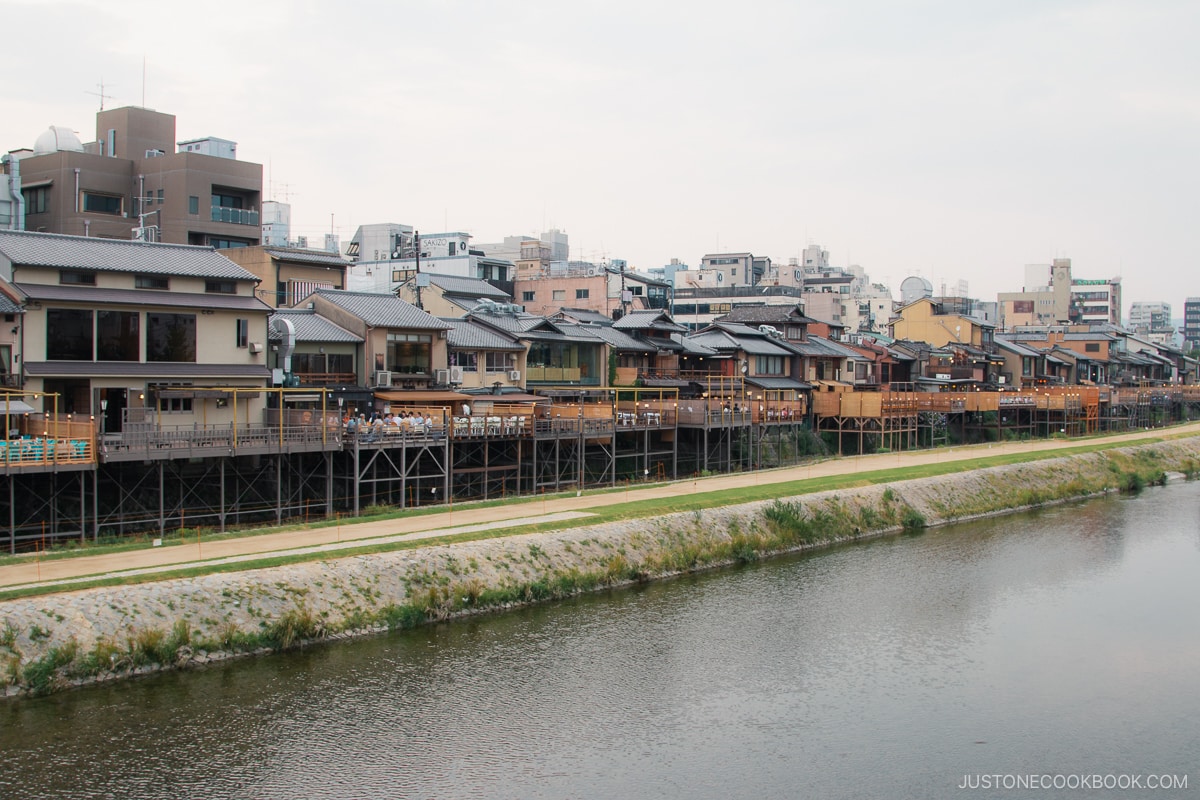
The buildings have a nostalgic charm, transporting you back in time. The restaurants on the right side of the alley offer seasonal outdoor patio seating with a view of the Kamogawa River.
Itoh Dining Kyoto: A Teppanyaki Experience to Remember
For our second dinner, we chose to dine at the charming Itoh Dining Kyoto, known for its award-winning Kobe beef teppanyaki. It is tucked away in a quaint alley within the enchanting Gion (祇園) district.
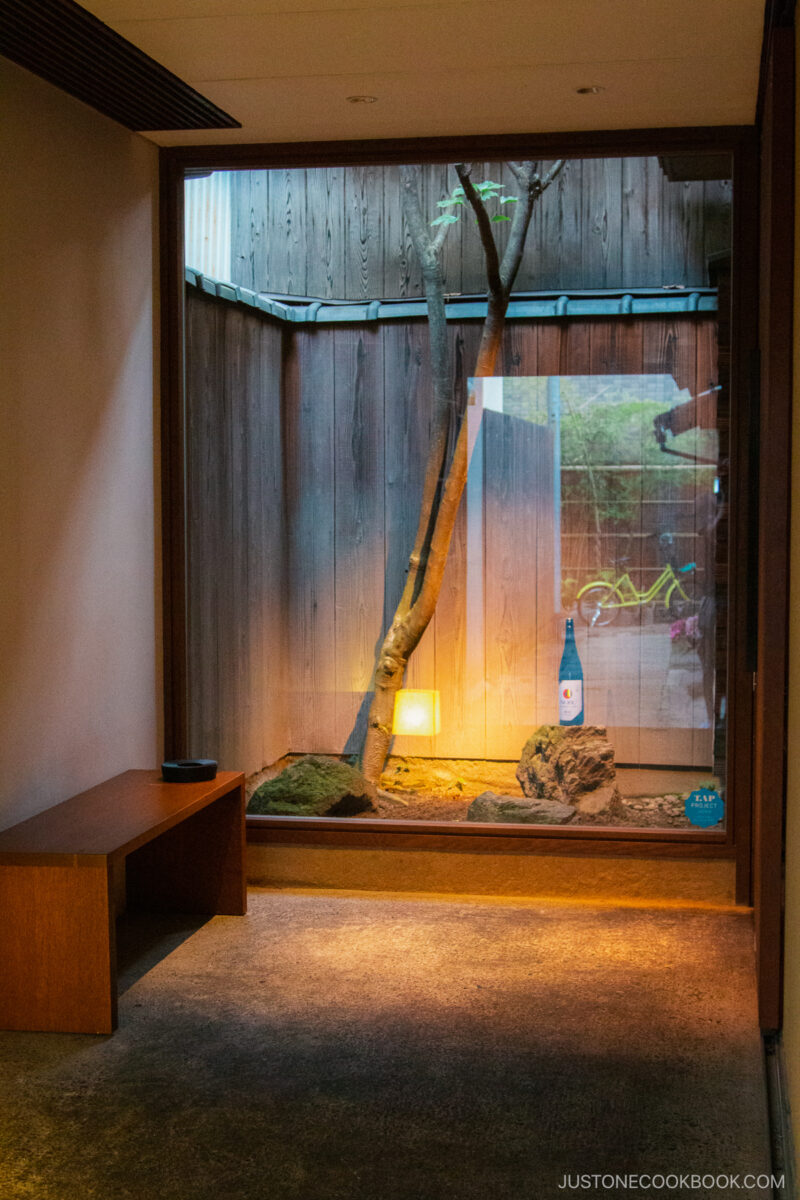
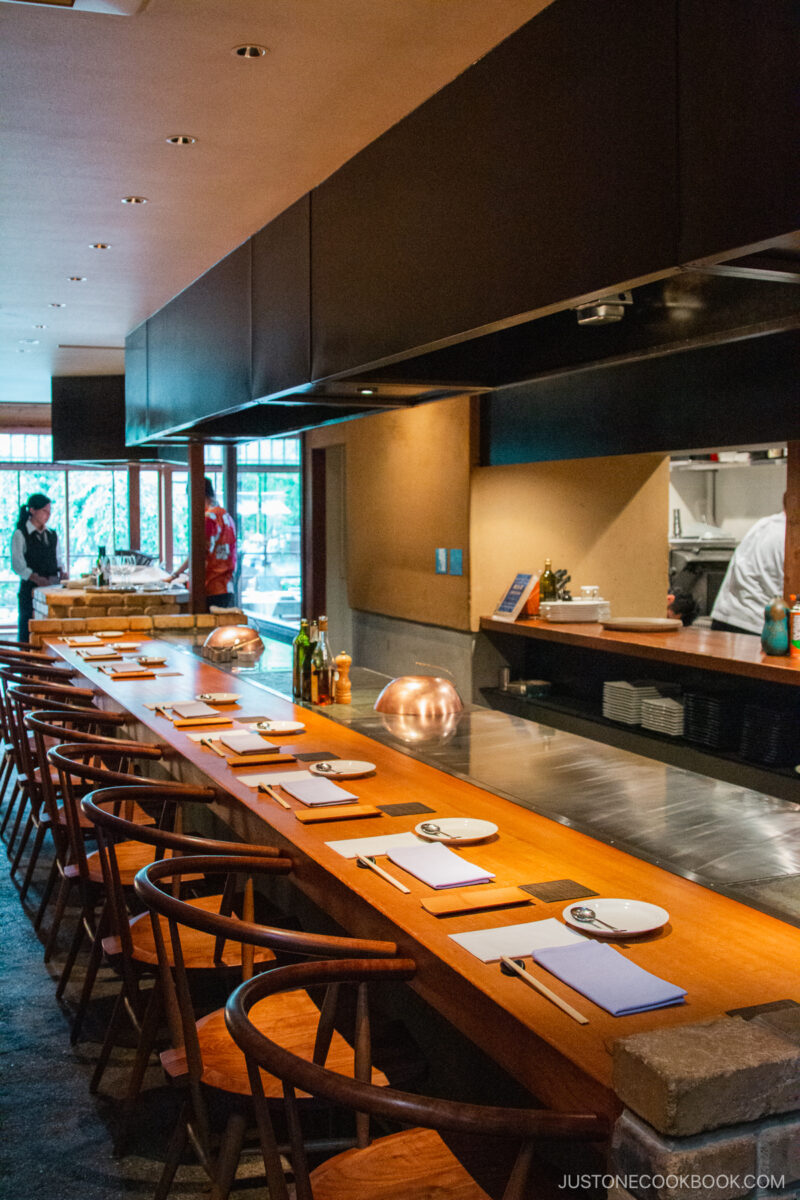
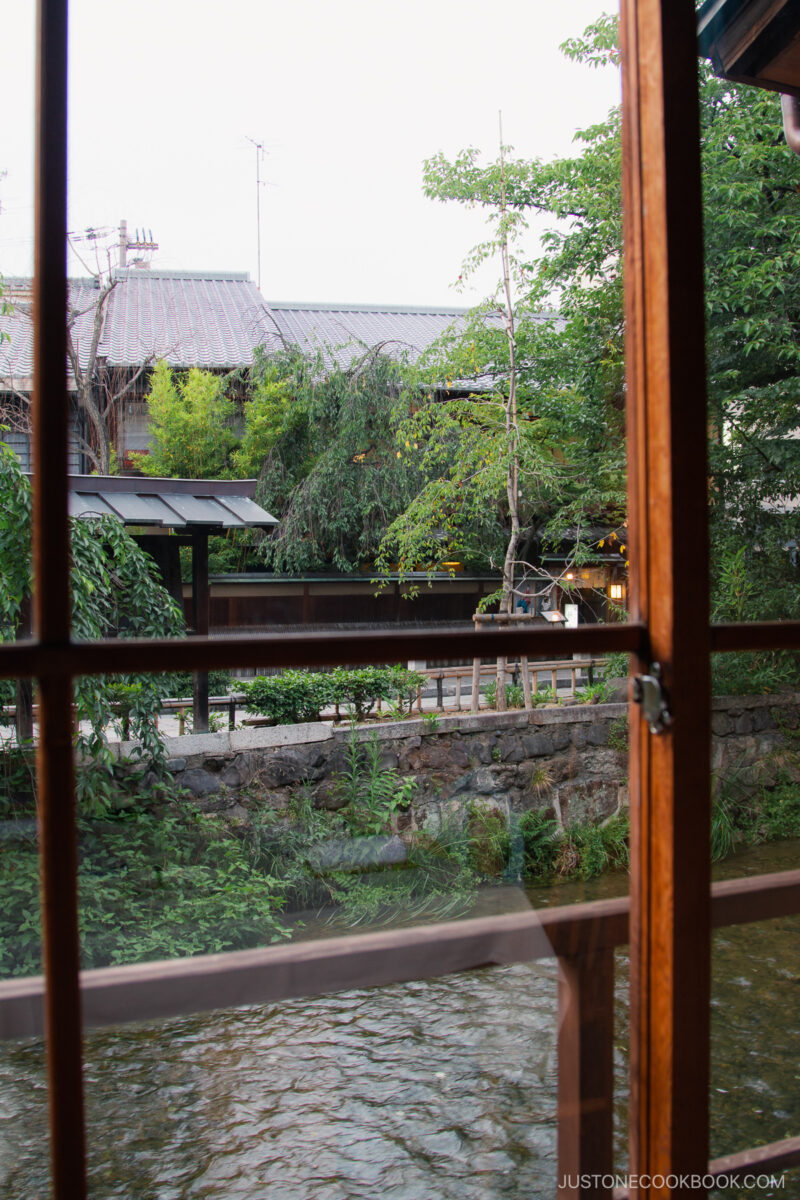
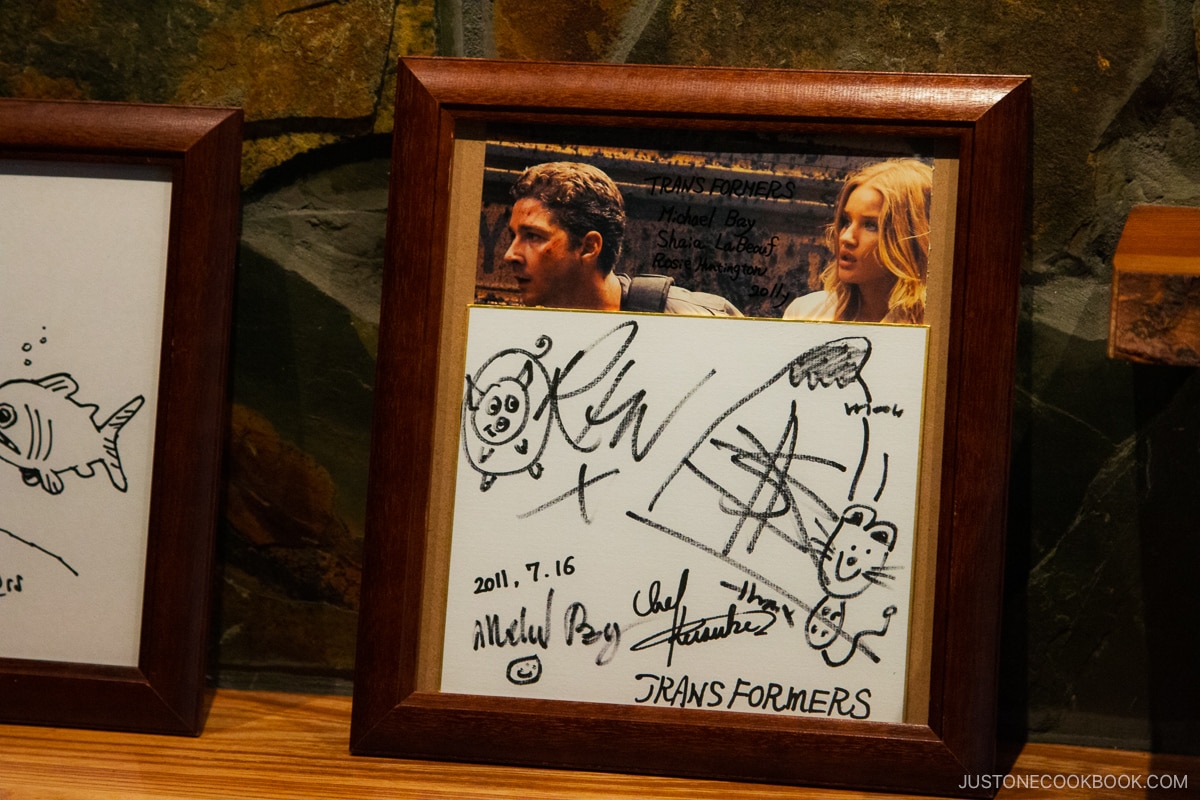
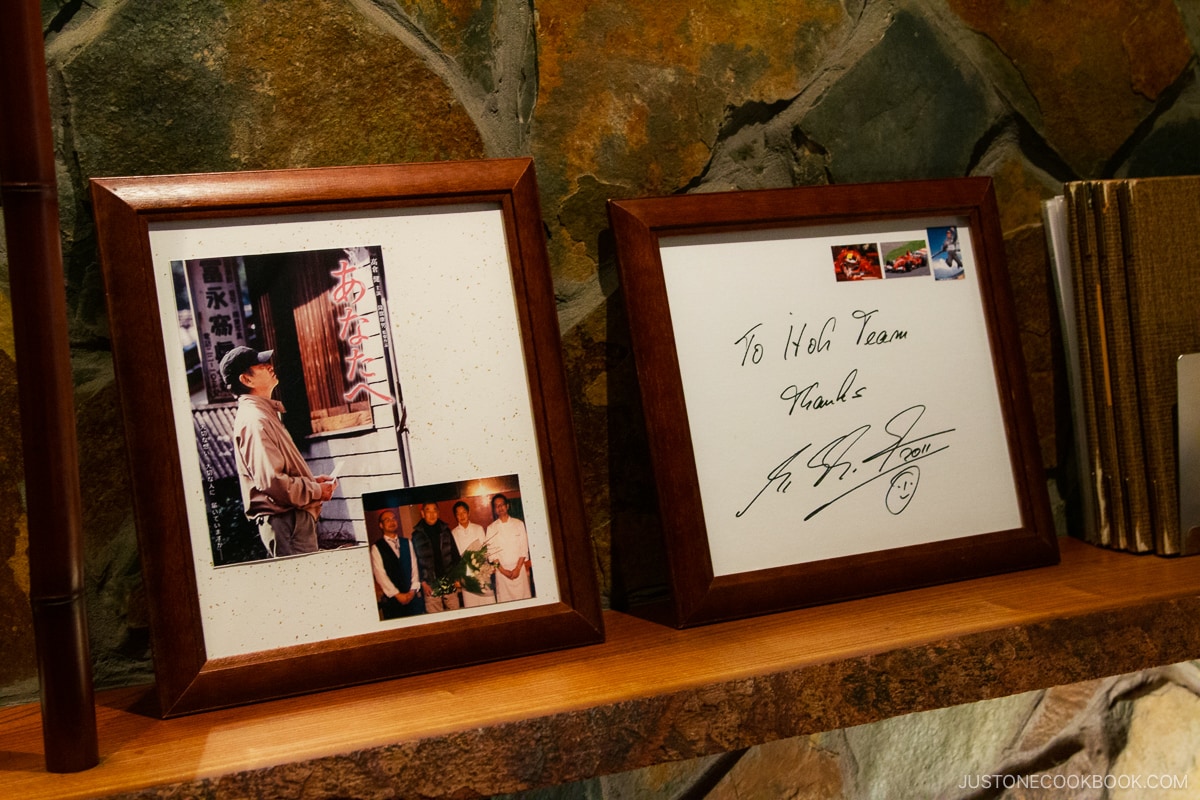
We were seated at the back of the restaurant right next to the picturesque Shirakawa river, making it the perfect setting to relish our dinner.
There were autographs from numerous celebrities, including the likes of Michael Bay and the Transformers cast, Michael Schumacher, and Yankee’s Masahiro Tanaka that adorned the display walls. Their presence further heightened our anticipation, setting the stage for what was sure to be an extraordinary experience.
With our expectations soaring, we eagerly awaited the arrival of our meals. The course meal came with katsuo (bonito) sashimi with ponzu and garlic flakes, cold kabocha (pumpkin) soup with crispy Parmesan cheese, fatty tender pork belly with potato and tomato sauce, sea bass with truffle sauce, foie gras with daikon simmered in orange juice, grilled beef, and dessert.
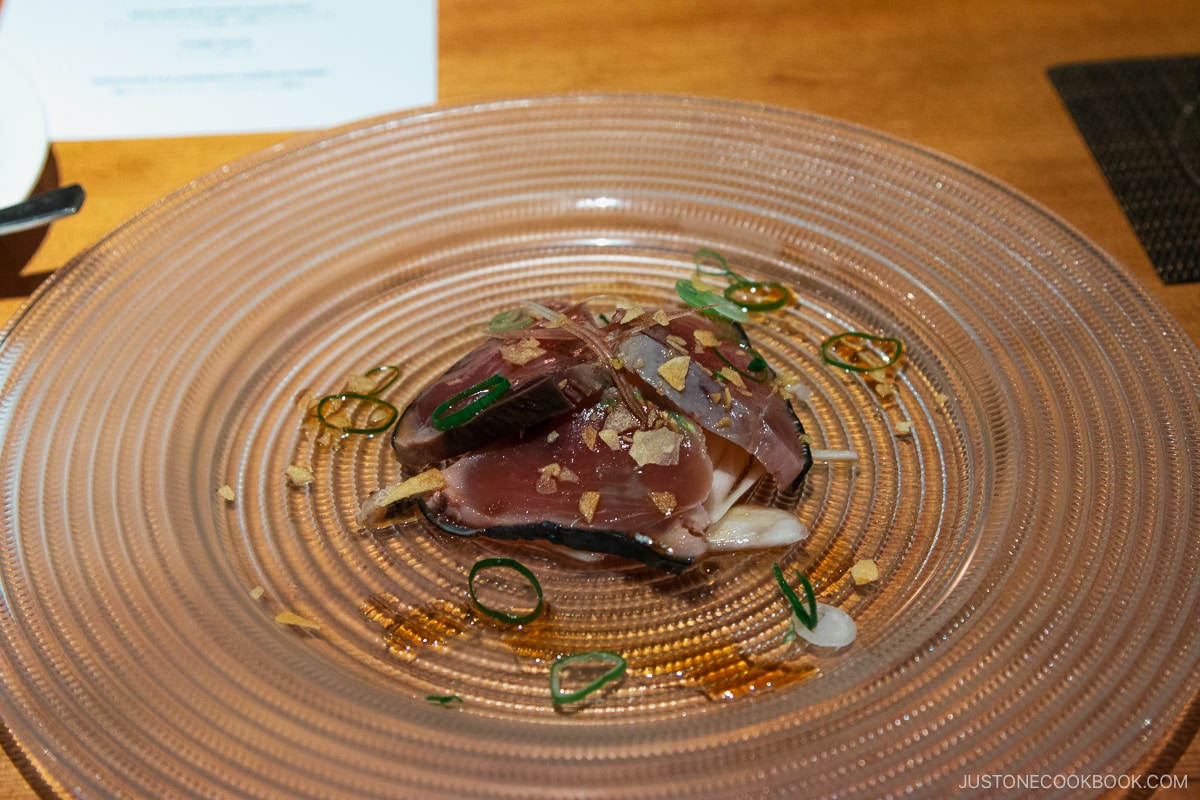
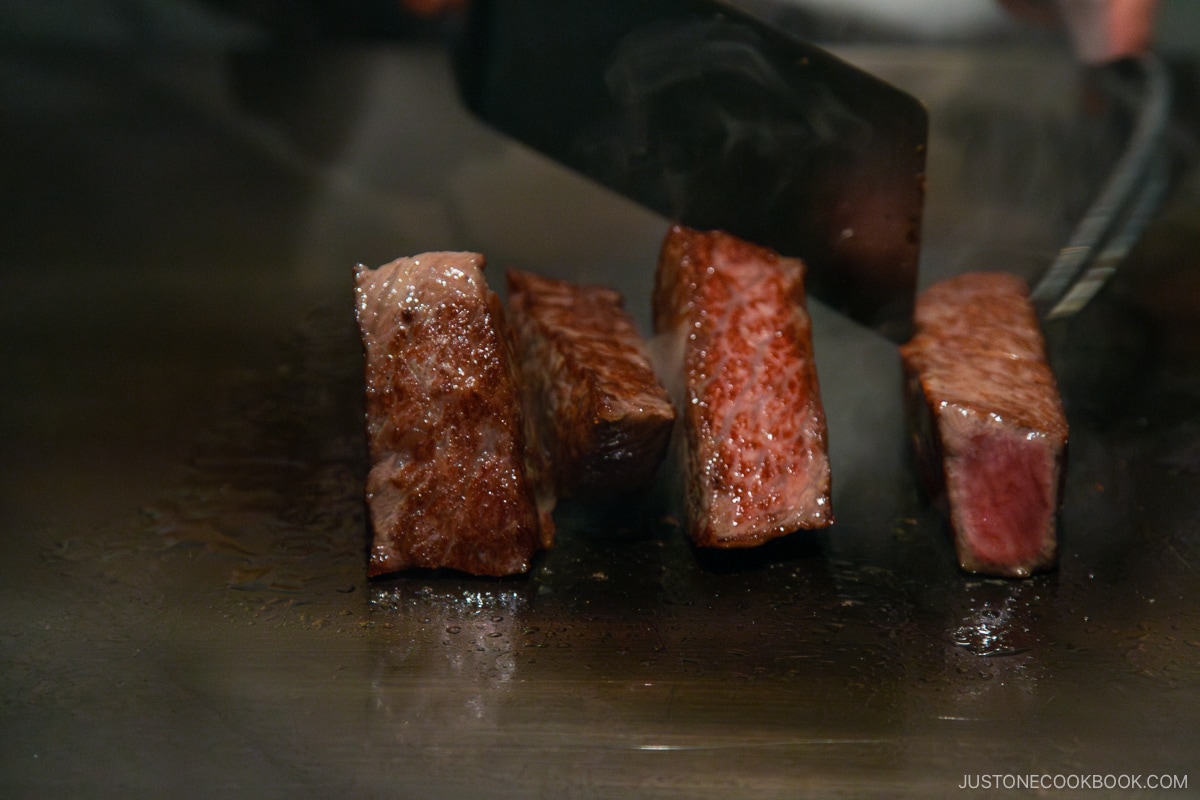
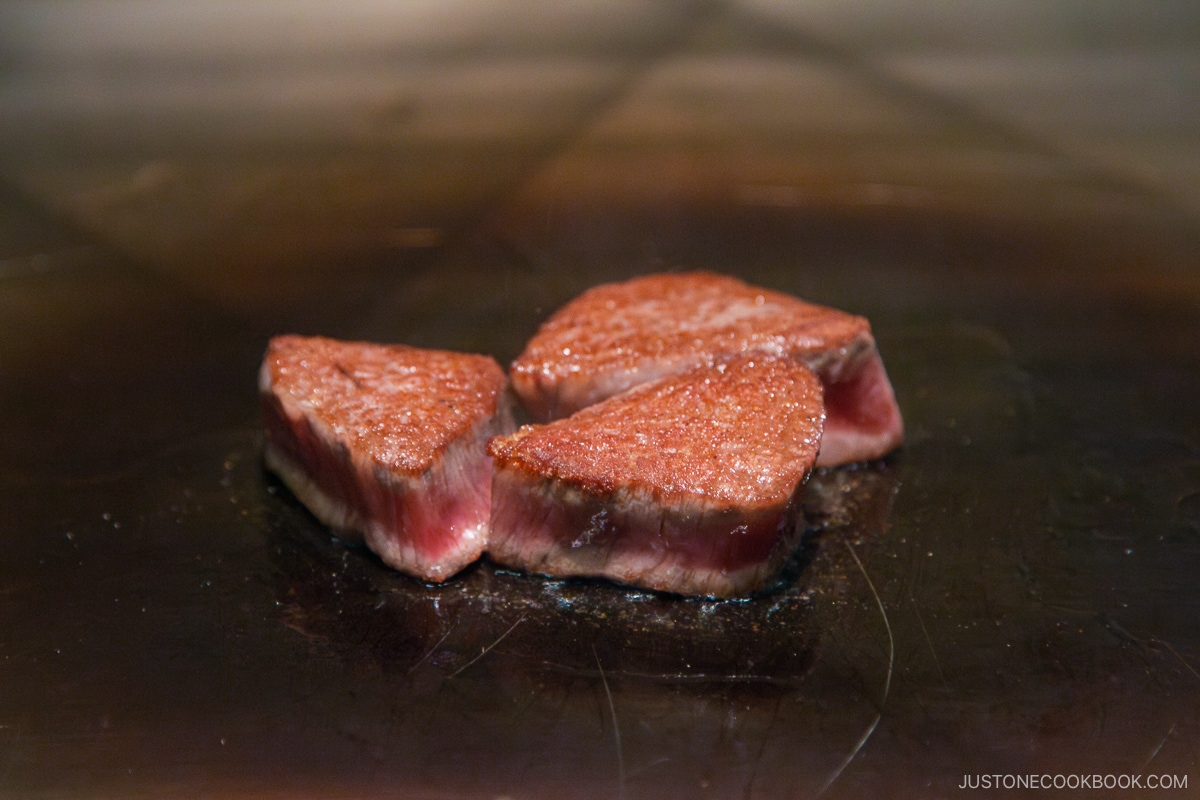
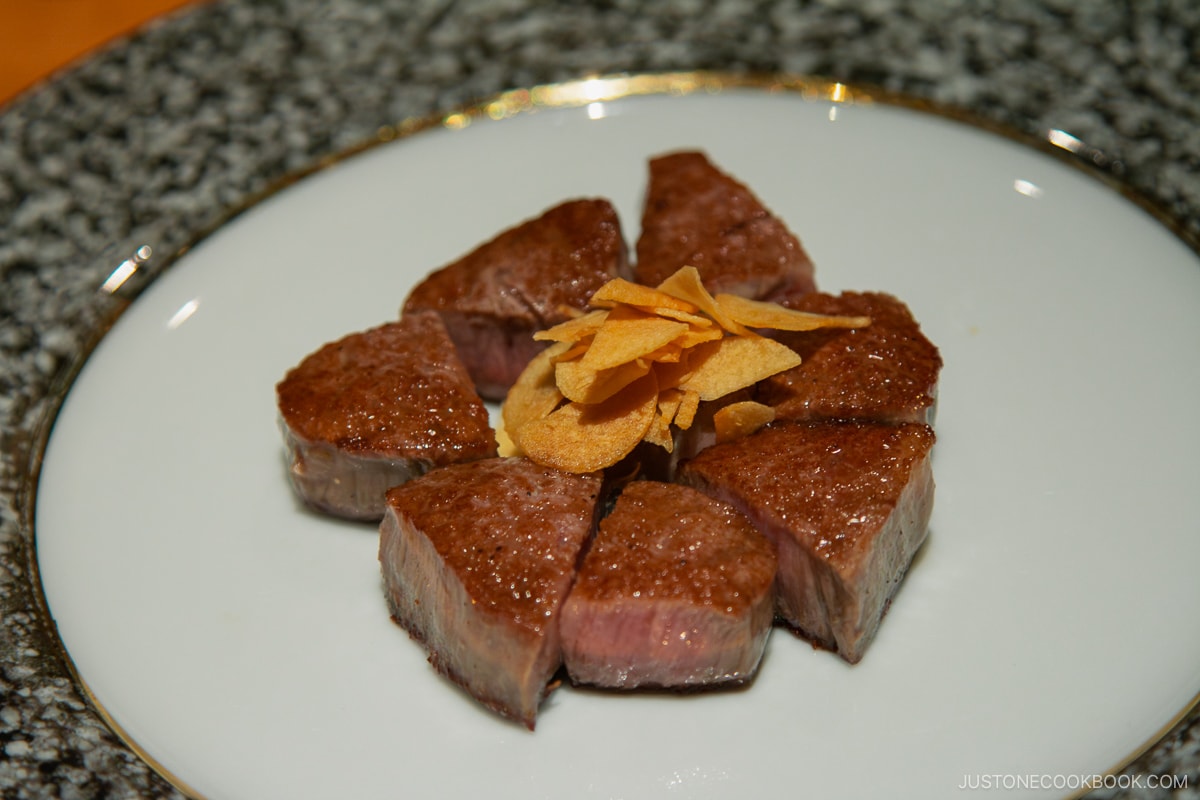
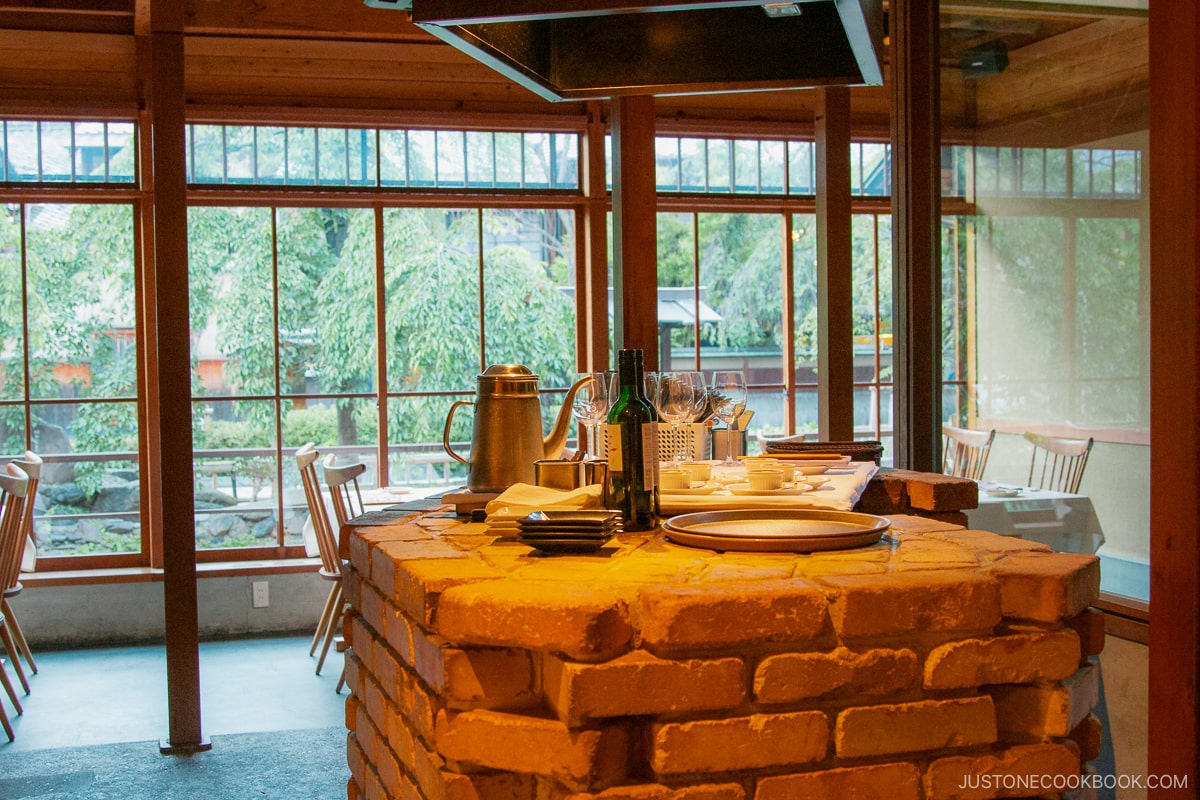
One of the highlights among the courses was the sea bass; it was crispy on the outside while the flesh melted in your mouth. The daikon simmered in orange juice paired well with the foie gras, cutting through the fattiness and soft root texture contrasted well with the crispy bread. The Kobe beef steak lived up to its expectation as the edges were lightly crisp and the meat was full of juice and flavor. The only disappointing part was the garlic chips as it tasted like they were from a pre-made package.
Nishiki Restaurant: A Kaiseki Cuisine Experience
Finally, the highlight of our meals in Kyoto. While in Arashiyama (嵐山), we made a reservation at Nishiki restaurant (京嵐山 錦), which served kaiseki ryori. In Kyoto, kaiseki ryori can range anywhere from USD$50 to USD$300 per person. We selected a restaurant that offers a variety of set courses from 7,000 to 12,500 yen (as of July 2023). Nishiki’s pricing was in our range and received good reviews. The restaurant sits on the small island off the Togetsukyo Bridge (渡月橋), creating a perfect and serene ambiance to enjoy our meal. It must be our lucky night as we were provided a large private room with a view of the river from the window.
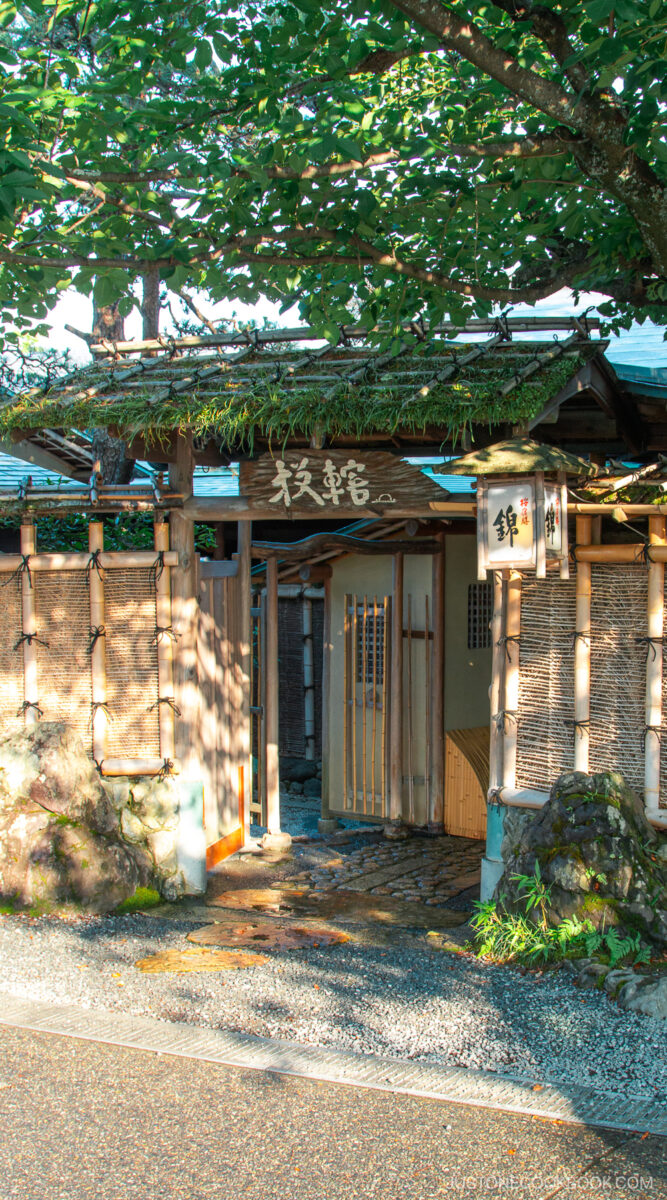
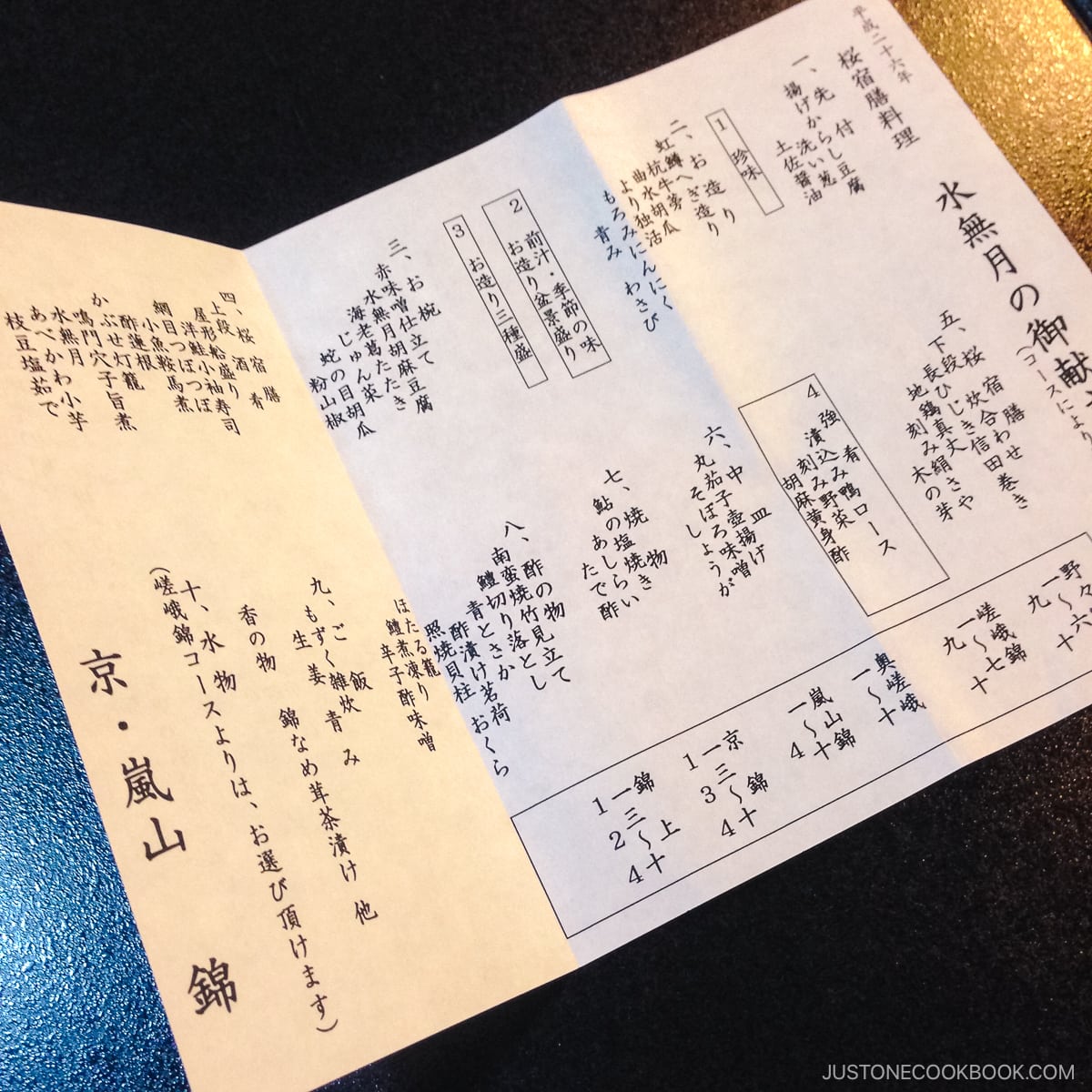
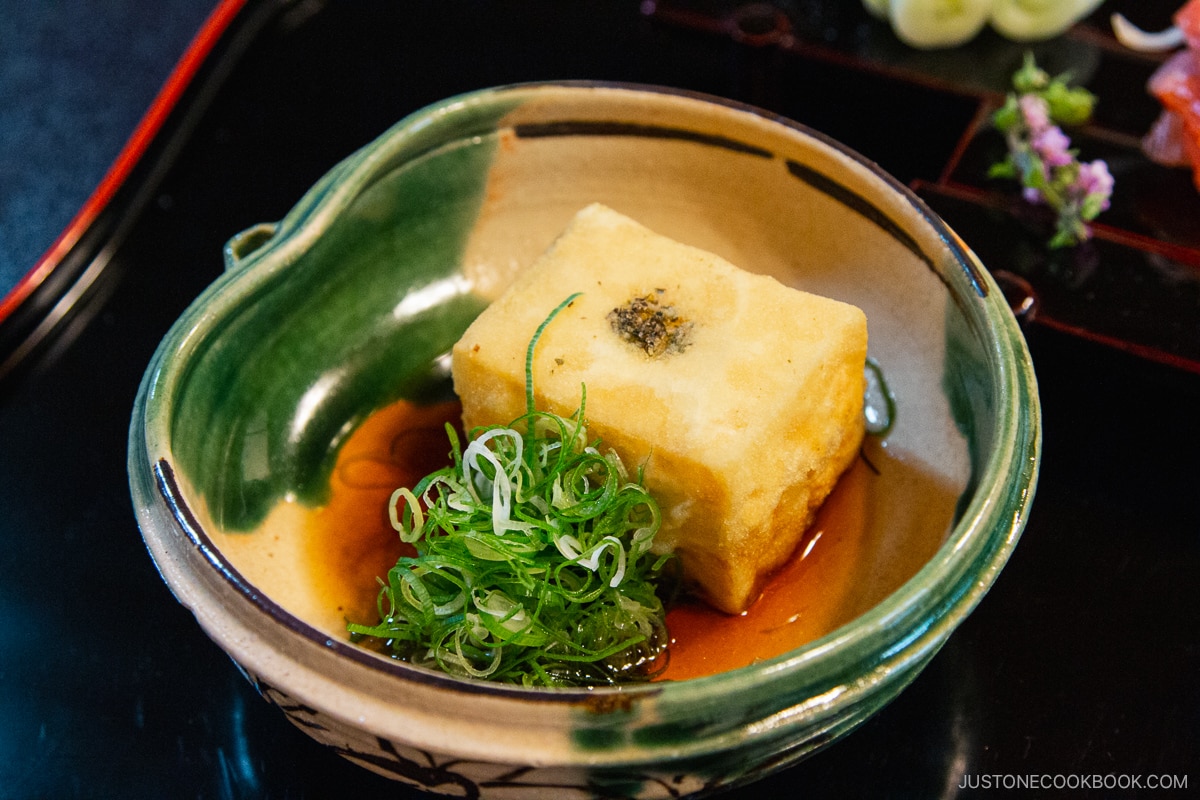
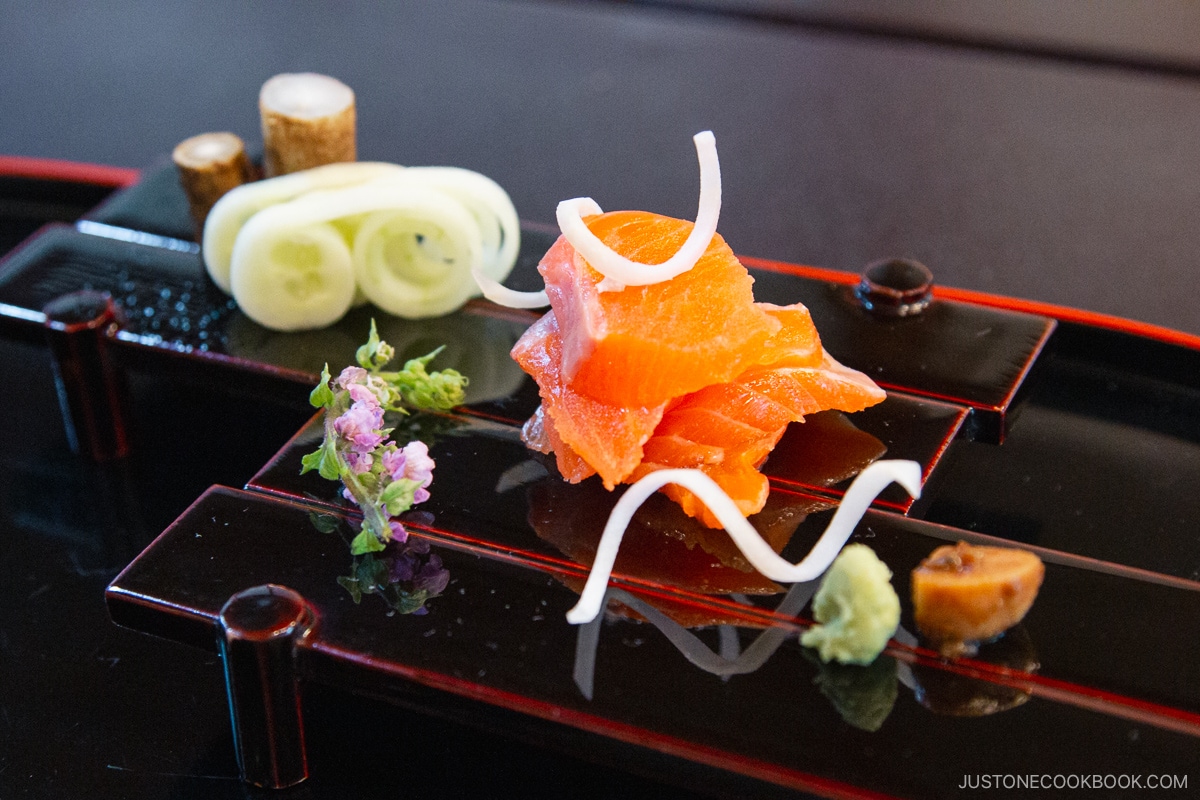
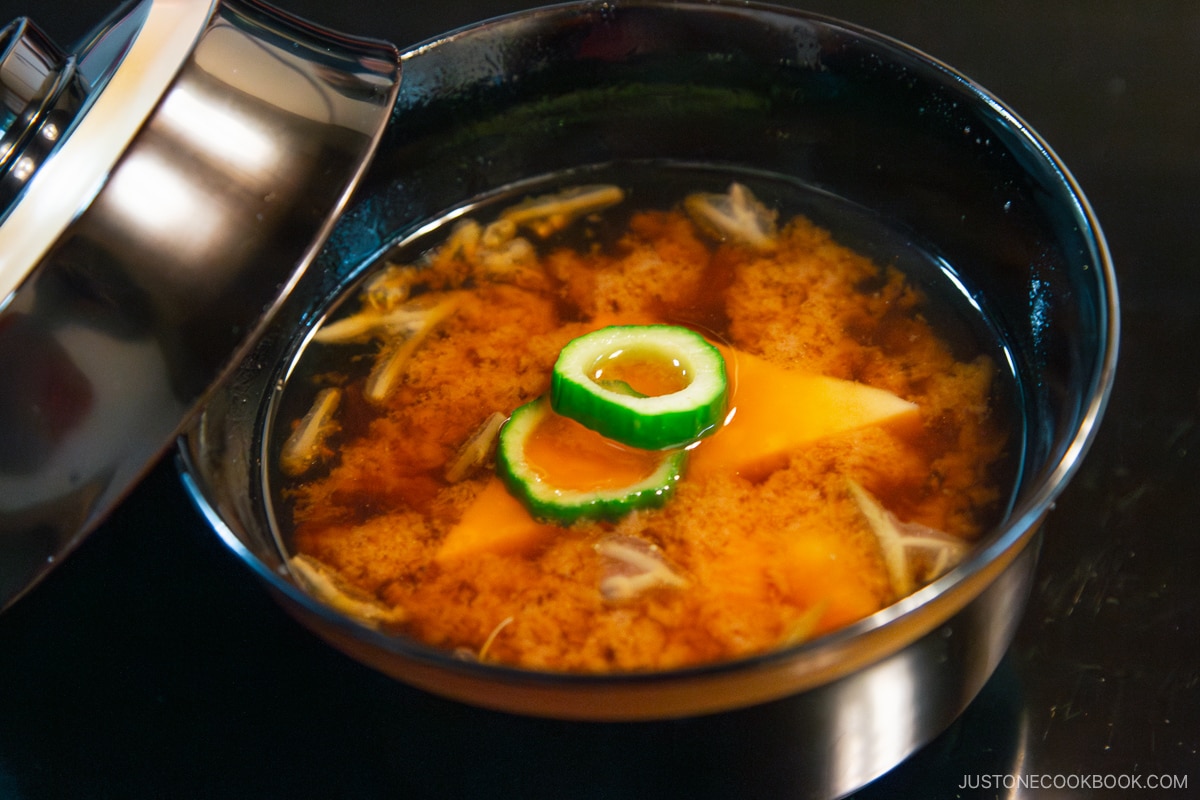
Elements of a Kaiseki Meal
The kaiseki meal was a stunning 10-course meal, and some of the courses contained multiple elements. What do we mean by elements? If you look at the sashimi dish, it is not just sashimi served on a plate. It’s decorated with cucumber and other ingredients which made the course a delight to look at like a piece of art, and, of course, just as enjoyable to eat. Every dish was exquisitely presented and tasted heavenly.
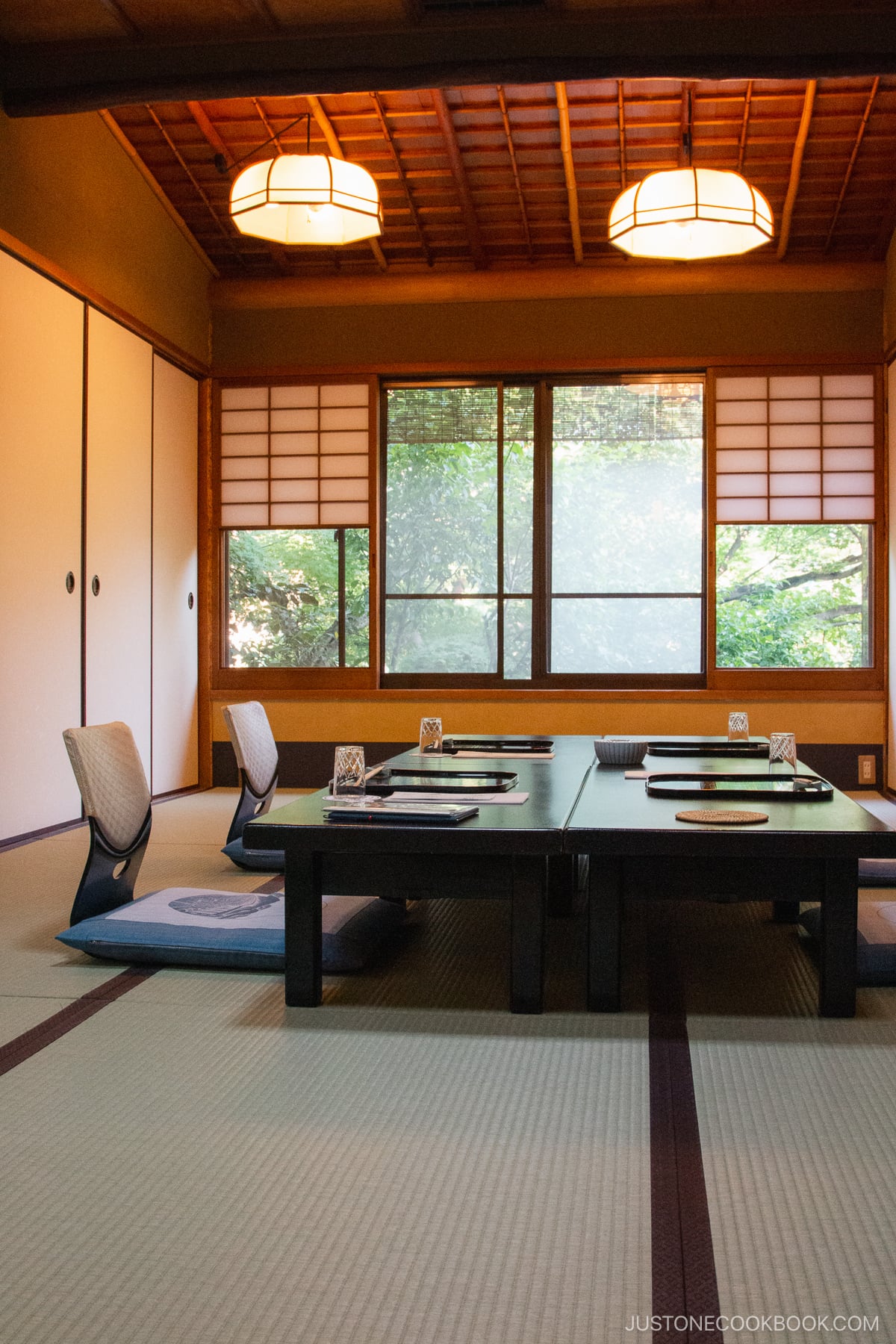
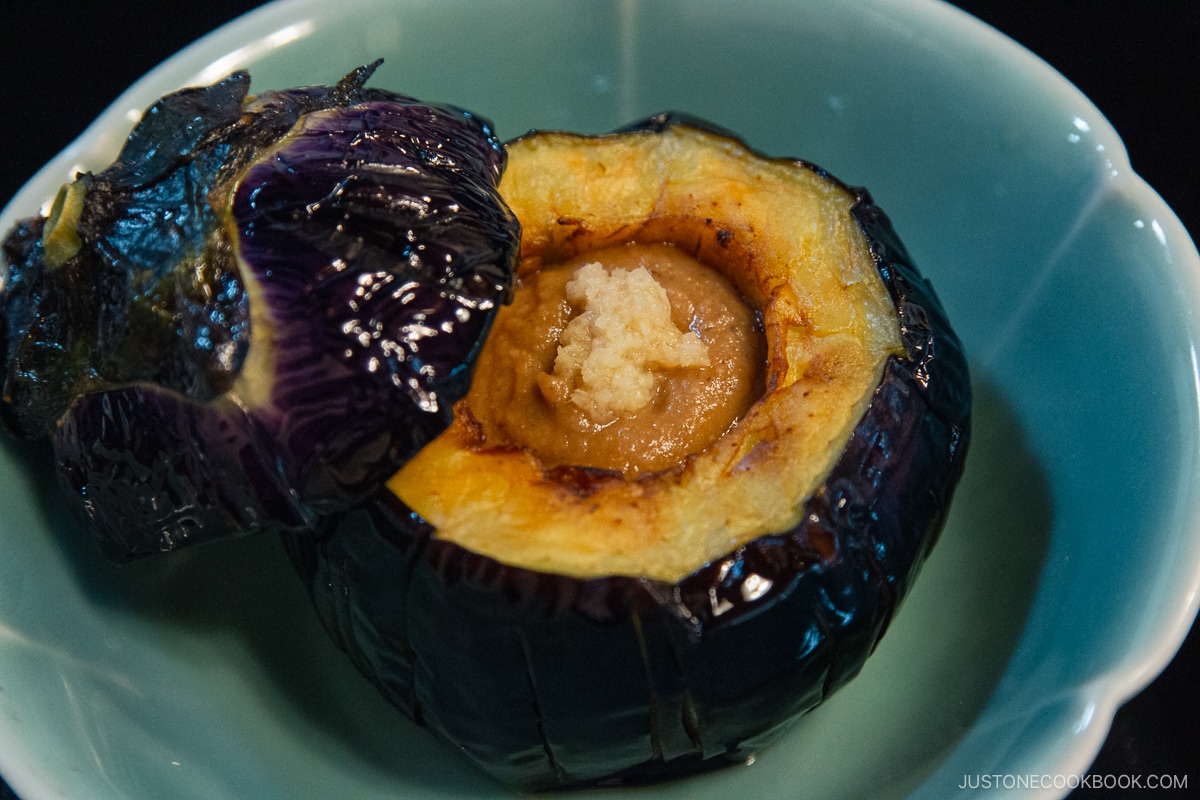
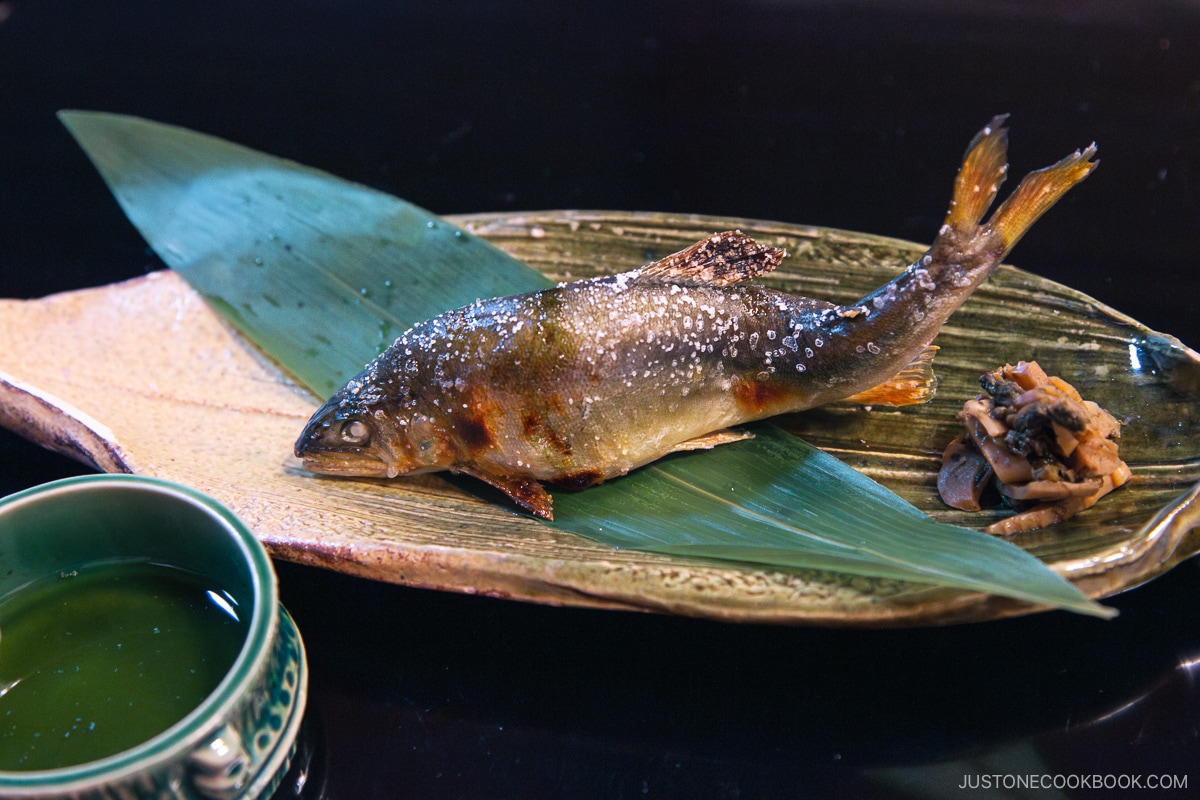
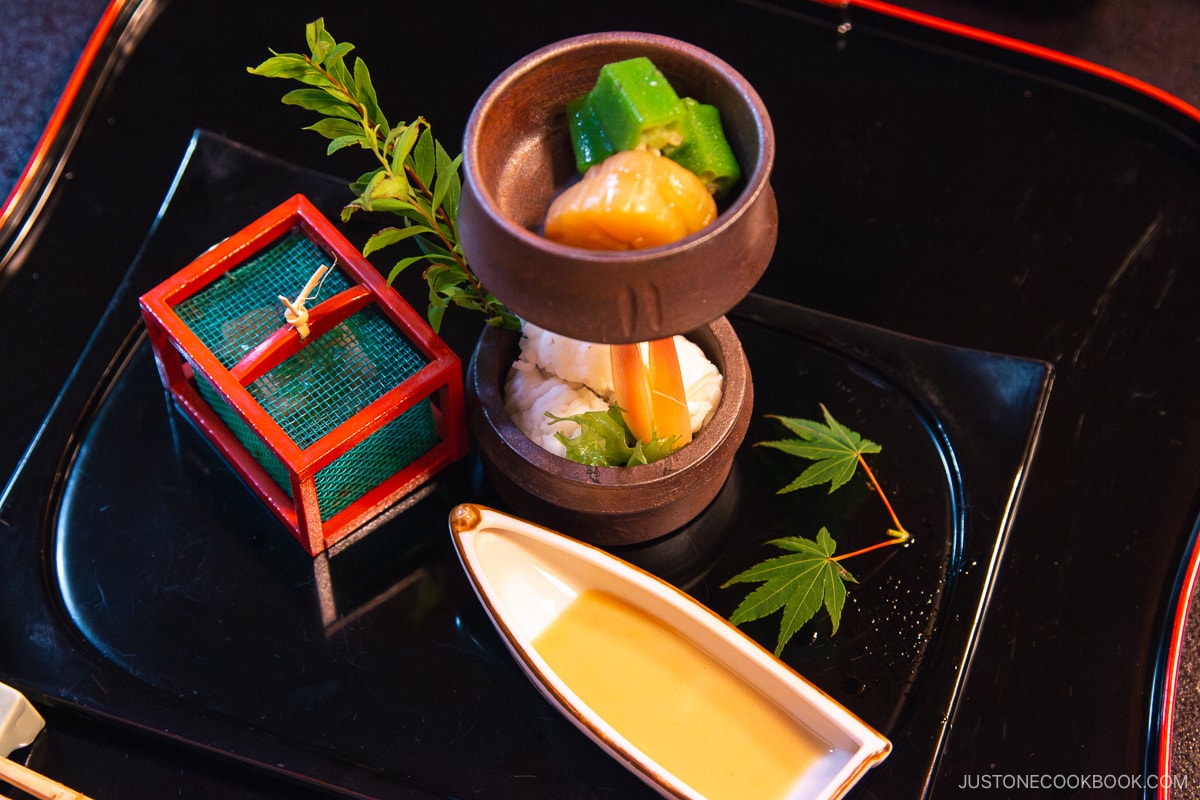
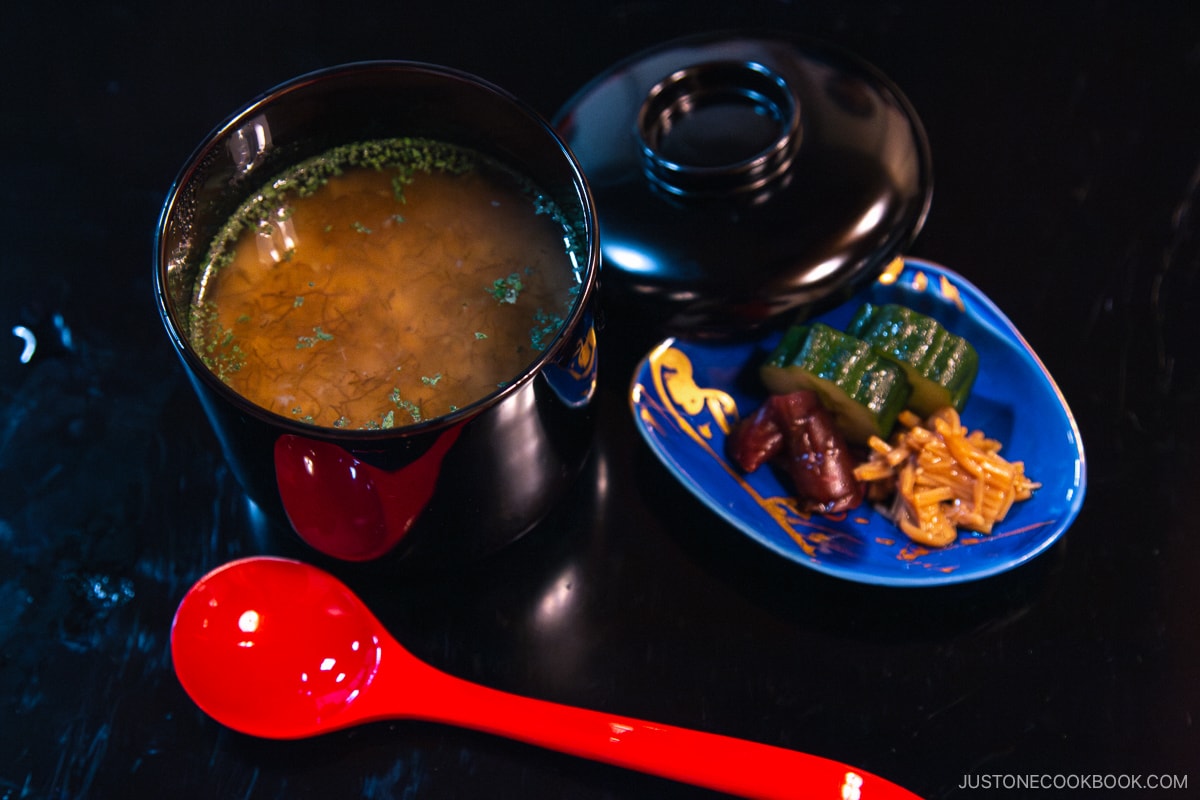
The chef’s attention to detail was admirable, from the plating to the taste to customer experience. Some of the dishes are interactive as well, such as small foods hidden inside the small wooden basket (bottom left), representing the night fireflies alongside the nearby river. It added a playful and entertaining element to the entire dining experience.
We finished the meal with 4 different kinds of desserts and our entire family was very satisfied. As you can see from the images, kaiseki ryori doesn’t just focus on the quantity of food, but rather the delicate preparation and presentation creating harmony for all five senses. Nishiki Restaurant exceeded all our expectations and was a high point during our trip to Kyoto.
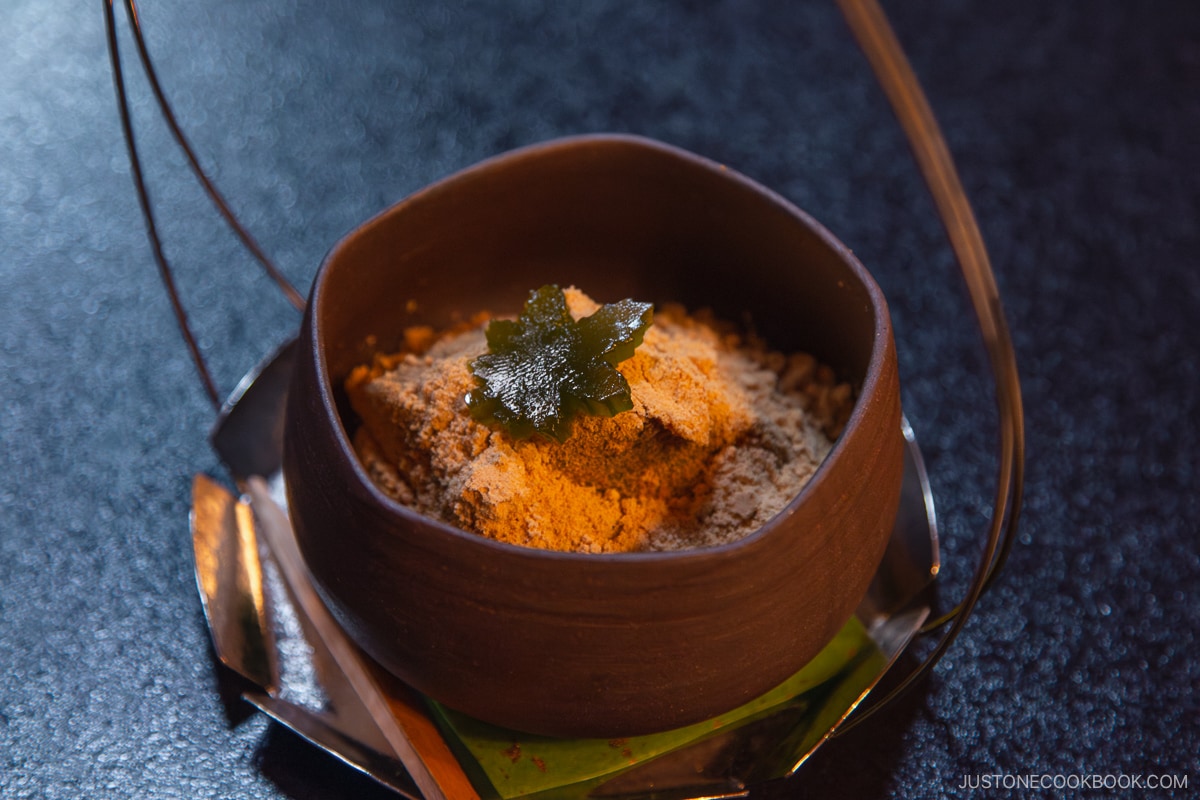
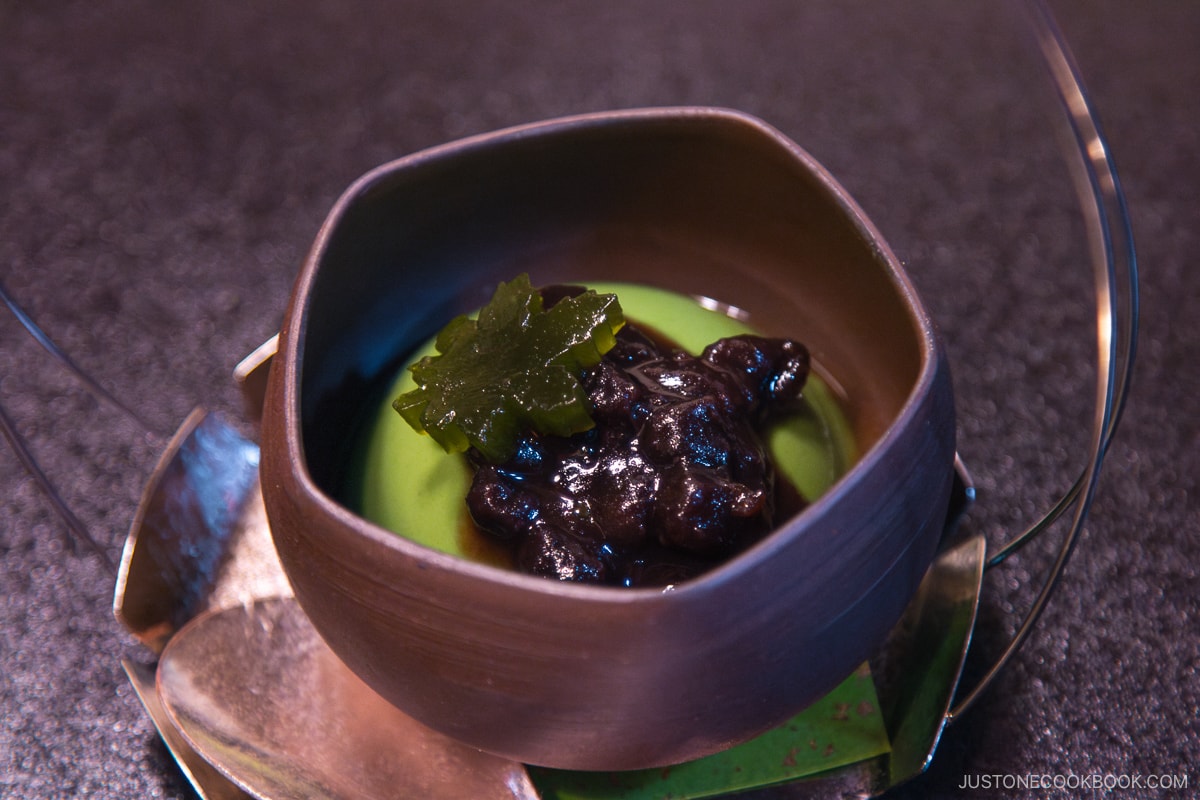
Additional Kyoto Restaurant Recommendations
Here are additional Kyoto restaurants and cafes recommended by Kayoko – JOC’s resident foodie.
For udon, head to Kyoto Gion Okaru (京都祇園おかる). This small and retro eatery is known for its soupy Kyoto-style curry udon. If you’re starving, top it with cheese, sliced beef, or katsu, or order it chilled during the summer. It’s also frequented by geiko (the Kyoto dialect for geisha) and maiko (geiko-in-training), which you will notice with the walls decorated with paper fans featuring their names, a gift they give to patrons and favored customers. I always order the Chilled Kitsune Udon (冷きつね), deep-fried tofu cooked in a sweet-savory sauce with a dab of wasabi to cut the sweetness.
For all things matcha, check out Chakoubou Nagatake (茶香房長竹). They make all their desserts from scratch, including green tea ice cream, red bean paste, agar cubes, and mochi balls. It’s a matcha lover’s paradise offering matcha desserts such as daifuku, parfait, cheesecake, warabi mochi, and shaved ice. They also offer obanzai (Kyoto-style tapas) if you need something savory and filling before your dessert. The menu is in Japanese only so use Google translate to order.
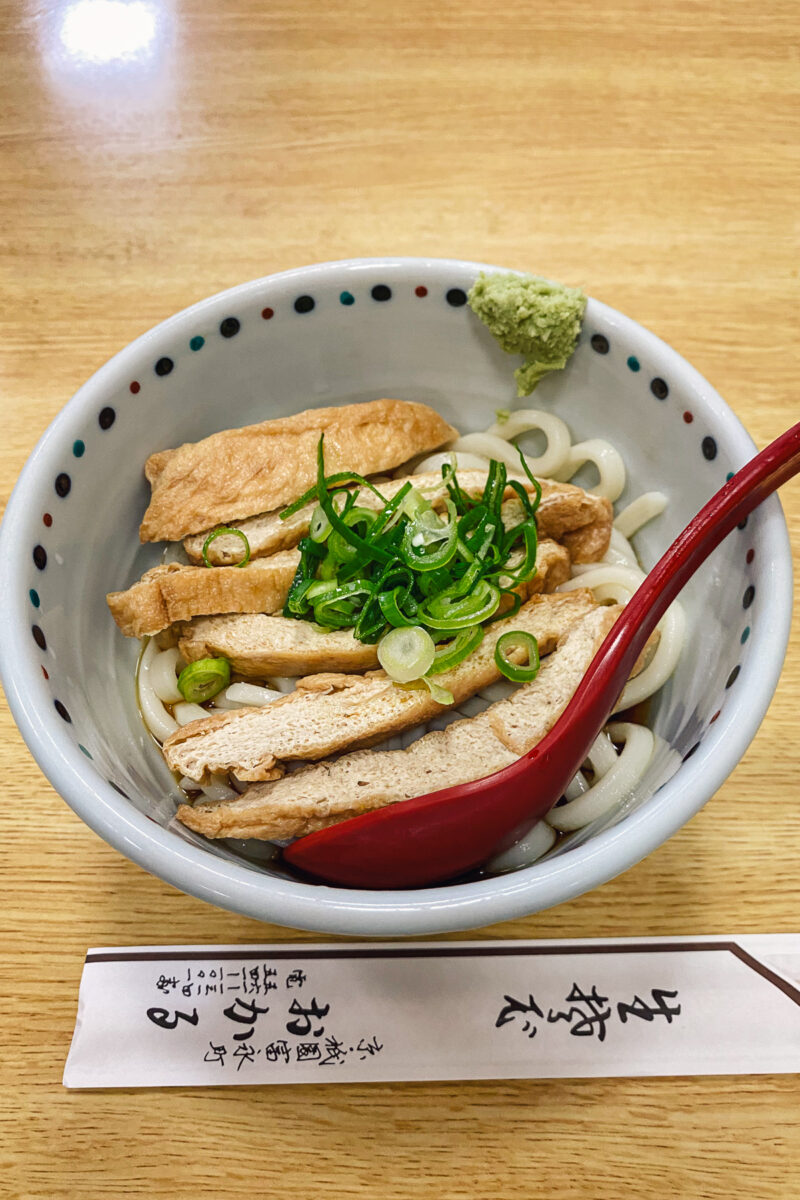
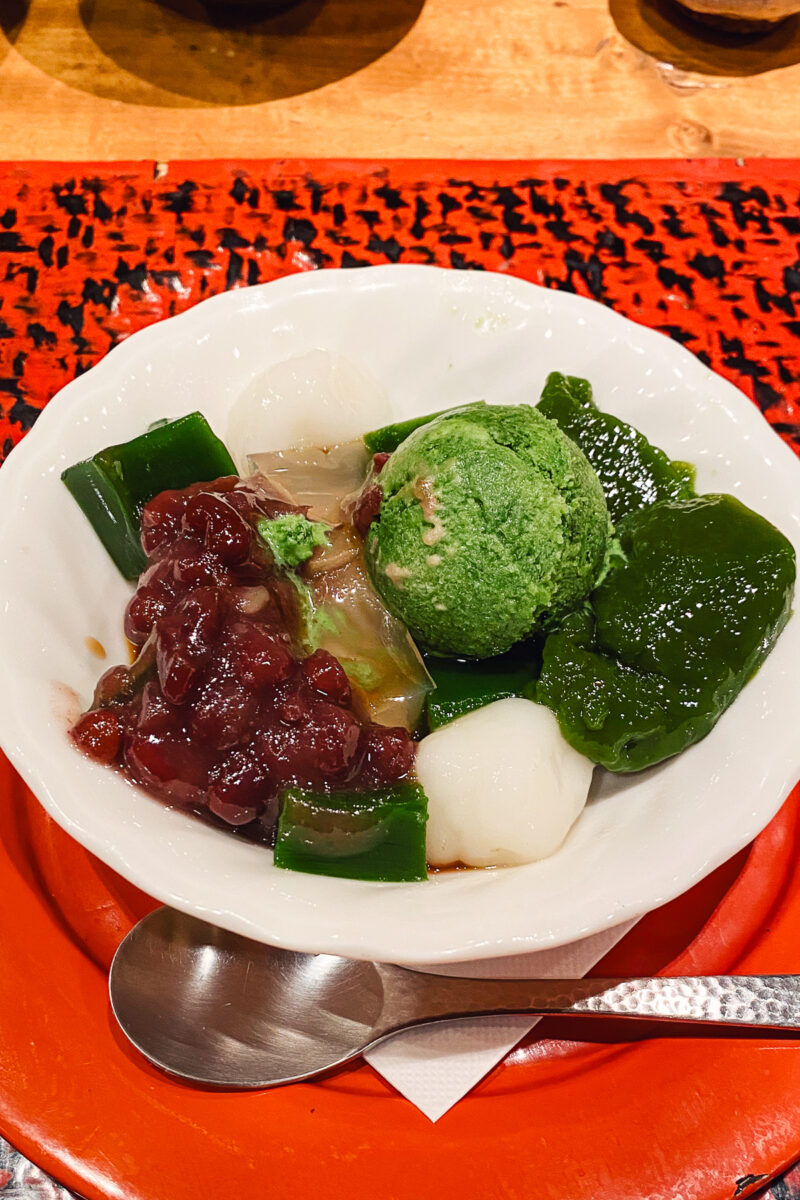
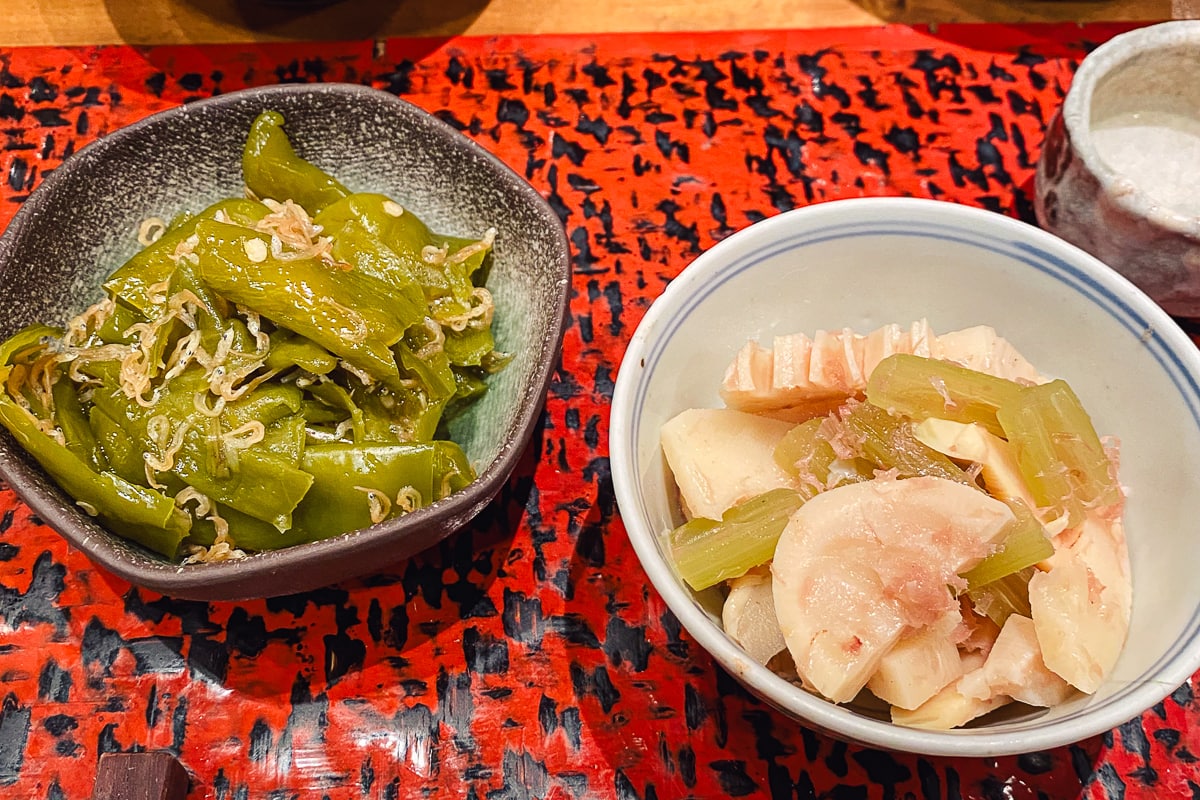
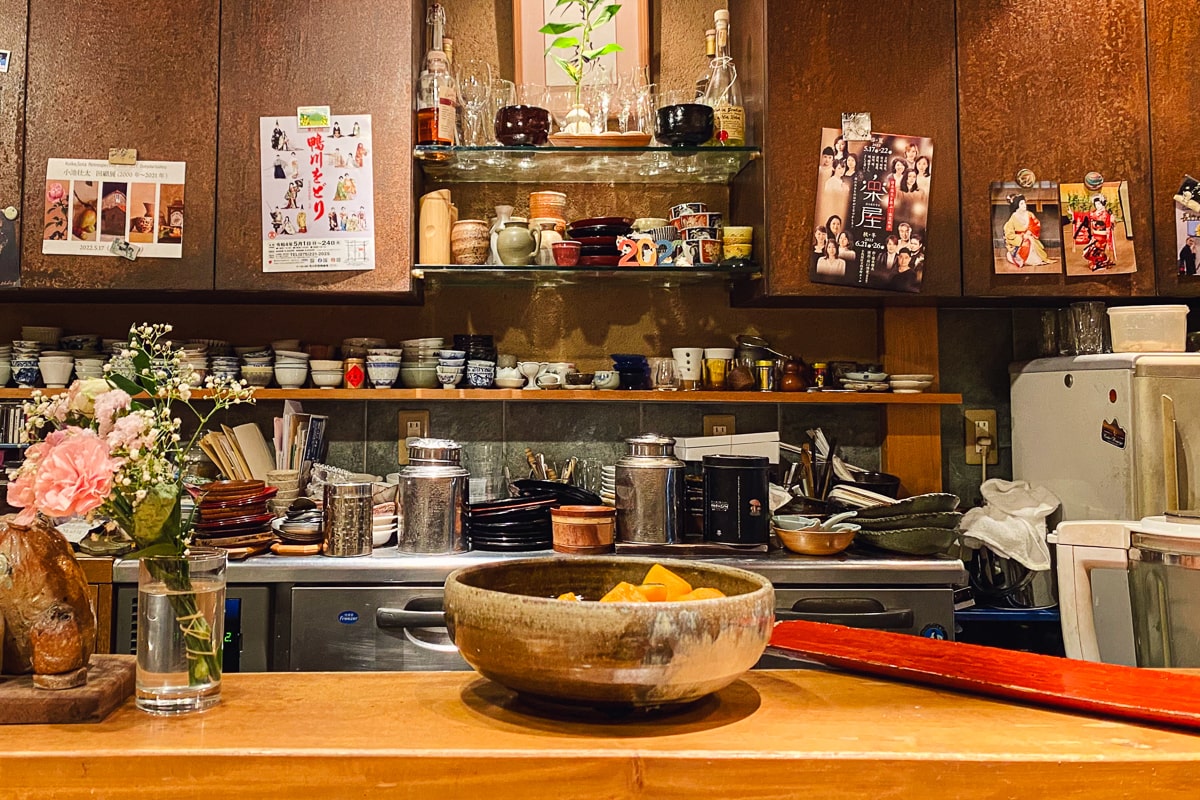
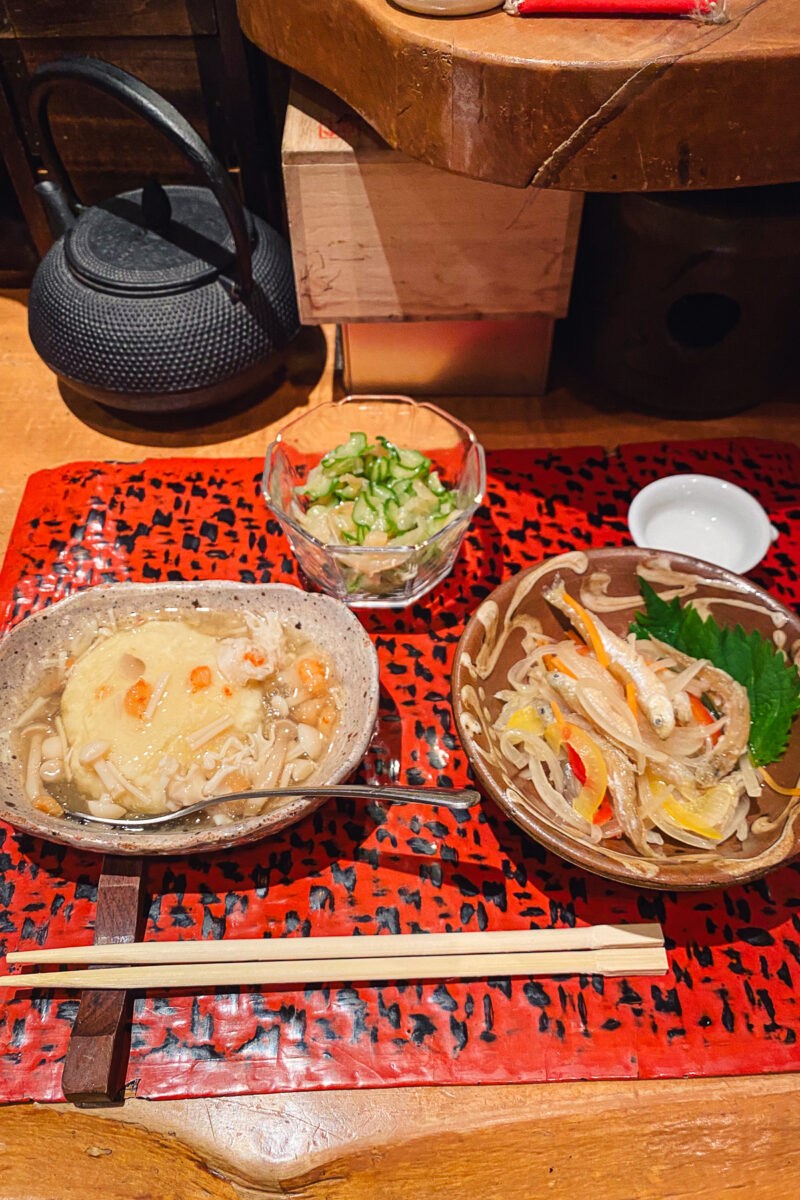
Gohan-ya, a Kyoto-style izakaya, is an excellent choice for the entire family. They offer set lunches/teishoku (定食) and an extensive dinner menu featuring seasonal and local specialties and regional sake. There’s also a sushi chef behind the counter if you wish for nigiri sushi, along with the izakaya fare. It’s great for families with children as they have table seating and with the diverse menu, there’s bound to be something for everyone.
Ready to start your day with a full breakfast? Choshoku Kishin (朝食嬉心) might satisfy your morning cravings. Offering the traditional Japanese meal with rice cooked in a clay pot, it’s a hearty and simple meal featuring local Kyoto produce.
We hope you enjoyed our brief Kyoto food guide as well as the flavors we experienced. Aside from this, there is so much more to explore, from matcha and tea ceremony to Kyoto-style sushi to traditional Japanese sweets. Kyoto is an amazing city full of culinary delights that we hope you get to explore!
Some of our readers ask us about what to eat in Japan, so check out our Tokyo food guide here. Do you love Yatsuhashi (八ツ橋) from Kyoto? Make it at home! Here’s the recipe.











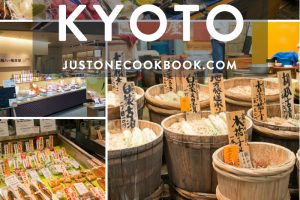
Found Itoh to be very disappointing. Dishes were beautifully plated and generally good. The beef was least favorite dish. It was as if they made the sauce the star, not the beef. Some of our best meals have been small places, I.e. Odin for two only $25 with drinks.
Hi Danny, We are sorry to hear that your experience at Itoh was not as good as when Nami and Mr. JOC visited.
Thank you for sharing.
Hi! I’m going to make a reservation at Nishiki! Is this the correct one? It’s so hard to tell haha. https://gurunavi.com/en/k007700/rst/
Hi Candace! Yes! The link looks good.
We hope you enjoy the meal at Nishiki.😃
Thank you for reading Nami’s post!
Wonderful review! I’ve dined @ both Okutan and Nishiki. The yudofu @ Okutan was out of this world and just sitting down @ Nishiki was an unforgettable experience. So enjoy Kyoto!
Hi Don, Thank you very much for reading Nami’s post and sharing your experience with us.
We are glad to hear you had an unforgettable experience!🙂
Hi Nami, I loved this piece and miss traveling to Japan during this time. I was especially intrigued by Okutan because I have not been there. Until we can all travel again, I am wondering if you have suggestions on how to find and sample very good tofu in California? I am in Southern California. Thank you!
Hi Erin!
Have you heard of this place in LA? http://www.meijitofu.com/
We’ve never tried it, but we saw a few articles about this place.